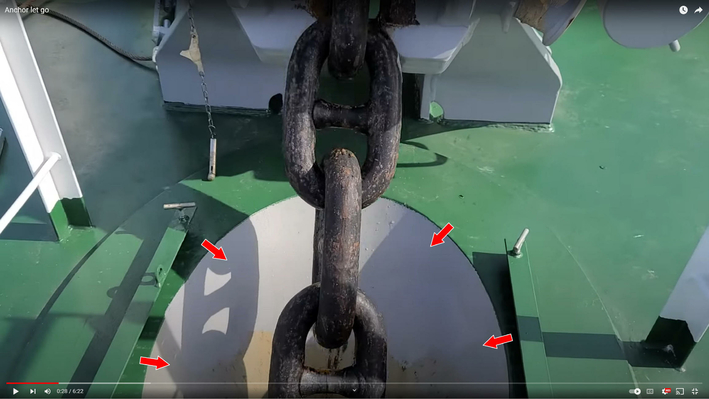- Retour accueil
- Vous êtes ici : Blog The Pyramids of the Cold v2 The Pyramids of the Cold Section 41 • The 293 kilograms windlass Staff of Moses and Aaron
The Pyramids of the Cold Section 41 • The 293 kilograms windlass Staff of Moses and Aaron
Publié par Bruno Coursol dans The Pyramids of the Cold v2 le 23/07/2023 à 13:09

"Moses and Aaron before pharaoh". On this image, their Staff had just been transformed into a snake, as a beautiful metaphoric representation of a rope slowly winding upon a wooden shaft, a drive shaft. The Staff of Moses and Aaron's Rod were about the same piece of equipment: the drive shaft of the Grand Gallery of the Great Pyramid of Egypt, which was nothing less than a 293 kilograms wooden windlass, laid on the platform of the Gallery and used to haul and raise the impactor of the Pyramid.
Original image from "The illustrated History of the World", published in 1877, by McCabe, James Dabney (1842-1883); page 54: https://archive.org/details/pictorialhistory01mcca/page/54/mode/1up
The Pyramids of the Cold v2 (May-July 2023) • Epilogue Part Two
Section 41 • The 293 kg windlass Staff of Moses and Aaron... and the First Plague of Egypt: water turning into blood
Introduction: I first want to emphasize one more time that the only goal of this study is only to find out the truth about our common ancestors, so to speak; because what ancient Egyptians have accomplished with the Great Pyramid, and everything before the operating Pyramid was built, triggered the most important upheaval event our species have ever seen. As we'll see in this Section 41 with the explanation of the legend of Excalibur, I'm seriously starting to wonder if there is anything coming from our past, myth or legend, that doesn't originate in the Great Pyramid, as we've already seen in the Hindu mythology, the Tibetan prayer wheels, the magical hammer of Thor (the Norse reinterpretation of Hathor, as the hauling Beetle "resting" at the top of the Grand Gallery and releasing the impactor through his legs).
What I really don't want is people to think I don't give a damn about their religious beliefs, and I'm sorry if some of you will be offended by what I'm revealing about the very origin of their own beliefs. I'm not attacking anybody, I'm just revealing how it all started. I'm not criticizing everybody's beliefs, I'm just describing what triggered their birth.
I'm myself not a religious person, even if I cannot disregard the hypothesis of a supreme being, a god who would have built everything there is. I'm a scientist, or at least I consider myself a scientist, and like most scientists I'm fascinated by the Universe and all its wonders; but at the end of the day, the only question that remains is: "where the hell is all this energy coming from?". That my friend, is the ultimate question, because we've all learnt that energy "doesn't create itself", it only transforms from one particular form to another one.
So, how did it all started? And why is there anything at all, instead of nothing, in the first place?".
Of course, I don't have the answer, but what I mean is that it would be very adventurous to blindly dismiss the possibility that some kind of conscious will is at play here. I don't believe in god, but I do respect those who do, and I really apologize if some people would feel offended reading the last two parts of this study. It's all I'm saying.
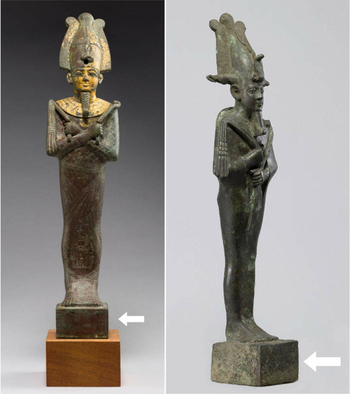
Summary: we've already seen in previous Section 40, what probably is the most unexpected discovery of this study: not only the operating Great Pyramid of Egypt, (the hauling process of the wooden and stone composite impactor to the top of the Gallery, its release, its speed, ramming power and its tremendous impact on the waters of the inclined well), has been the origin of the Norse mythology (Thor really is a reinterpretation of Hathor), the Hindu mythology (the Churning of the Waters), and the design of the Tibetan prayer wheels (the very faithful reproduction of the axle beam driving shaft of the Gallery), but the Pyramid was also what triggered the birth of Judaism.
It seems like everything that happened in the Grand Gallery has been completely reinvented, reinterpreted in a brand new series of myths where the goal could have been the passage to the ancient Egyptian polytheistic religion (over 2,000 gods and goddesses), to a monotheistic religion.
The same way that the Great Pyramid has been associated with ancient Egypt itself in the Egyptian religion (Upper and Lower Egypt only referring to Upper and Lower Pyramid, where the frontier was represented in the giant top platform of the Gallery), the Great Pyramid has been associated with Israel itself in the Hebraic religion.
We've already seen that Moses was the Jewish counterpart of the ancient Egyptian god Osiris (they share the exact same story where they are thrown into the Nile river in a floating basket or a floating coffin, before being saved from these waters by a woman, either the daughter of pharaoh or the goddess Isis); in this Section, we'll see what probably is the most fascinating part of the study: the entire operating of the axle beam driving shaft of the Grand Gallery is the chore of the Jewish religion, and everybody knows about that shaft, because that driving shaft, endlessly rotating in both directions is what the Staff of God (also known as the Staff of Moses and Aaron's Rod) is all about.
And amazingly, scriptures themselves are giving us its precise weight: 40 seahs; that is a little over 293 kilograms.
Not only we have now the weight of the drive shaft of the Grand Gallery, but we also know that it's design was very close to a windlass, the piece of equipment that is operating the anchor of our modern ships; and if you think it through, when the hauling Beetle was raising the impactor in the Grand Gallery from the waters of the inclined well, it would have looked like they were raising an anchor.
Of course, the final goal of the process was to produce pressurized water in the well, so that about 200 liters, every 15 to 20 minutes or so, would have been ejected from the well; and that is precisely what were supposed to do the Staff of Moses and Aaron's Rod: expel water out of the rock. Considering that the true nature of Moses is about the granite Osiris weight of the impactor of the Great Pyramid:
• When Moses is striking the rock, he is transforming the inclined well into a living and beating heart that is expelling water towards the evaporative cooling passage: that is "Moses expelling water out of rock" (the well indeed is made of rock).
• When Moses is striking the waters of the well, he is transforming these waters into blood, because the well has become a beating heart; and because ancient Egyptians did glorified these waters into the waters of the Nile, Moses is then "transforming the waters of the Nile into blood".
That is the true meaning of the First Plague of Egypt.
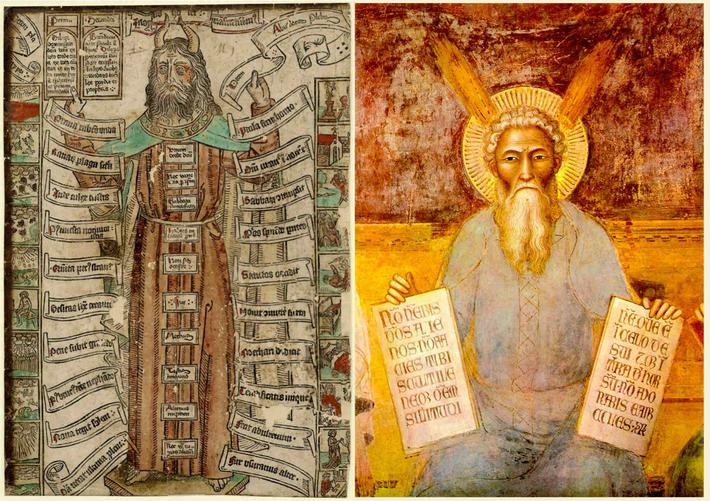
"Moses, the ten plagues and the ten commandments; Moses, with horns on his head, stands on a pedestal; down the front of his tunic are ten tablets with the ten commandments inscribed; he holds a tablet with Christ's summary of the commandments and a scroll with "Decem Abusiones Plebis"; down the left side are the plagues of Egypt in ten compartments, each described on a scroll next to it; down the right side are the sins which violate the commandments, also described on scrolls". Woodcut with hand-colouring (between 1465 and 1480), from the British Museum: https://www.britishmuseum.org/collection/object/P_1872-0608-340
Representation of Moses, by Andrea de Boaiuto (1333-1392), published by Aron Macedo on flickr: https://www.flickr.com/photos/aronmacedo/7181762792
41.01 Moses and his ram's horns
There are many representations of Moses with ram's horns, but obviously the horns have been replaced other the years and centuries, into what looks like beams of light, as people seemed to have more and more difficulties explaining the horns.
41.02 Scholars are not sure if the Staff of Moses, also known as the Staff of God, is the same Staff used by Aaron
"The Staff of Moses, also known as the Staff of God is a staff mentioned in the Bible and Quran as a walking stick used by Moses. According to the Book of Exodus, the staff (Hebrew: מַטֶּה matteh, translated "rod" in the King James Bible) was used to produce water from a rock, was transformed into a snake and back, and was used at the parting of the Red Sea. Whether the staff of Moses was the same as the staff used by his brother Aaron has been debated by rabbinical scholars." https://en.wikipedia.org/wiki/Staff_of_Moses
"The question of whether Aaron and Moses used the same staff is an interesting one. Some of the midrash say they are the same, but others say no. I found one that says that when Moses struck the rock in Chukat, he was using the wrong staff – he’d taken Aaron’s staff when he was supposed to use his own. Others note that Aaron’s staff does some dirty work like eating snakes. The staff of God, the one held by Moses, could not be allowed to eat snakes or touch water that was turning to blood. But, this staff, made of either almond wood or sapphire, was cut by God from the Tree of Life in the Garden of Eden and inscribed with the Tetragrammaton, the holy four-letter name of God, and possibly also with the names of the ten plagues." https://agudasachimic.org/2022/07/14/the-staff-of-moses/
"The rod with which Jacob crossed the Jordan (Genesis 32:11) is the same rod which was in Judah's hand (Genesis 38:18), which was in Moses' hand (Exodus 4:20), which was in Aaron's hand (Exodus 7:10), which was in David's hand (1 Samuel 17:40), which was in the hand of each king until the destruction of the Temple, when it was hidden. When the Messiah comes it will be given to him for a scepter in token of his authority over the nations." https://en.wikipedia.org/wiki/Aaron%27s_rod
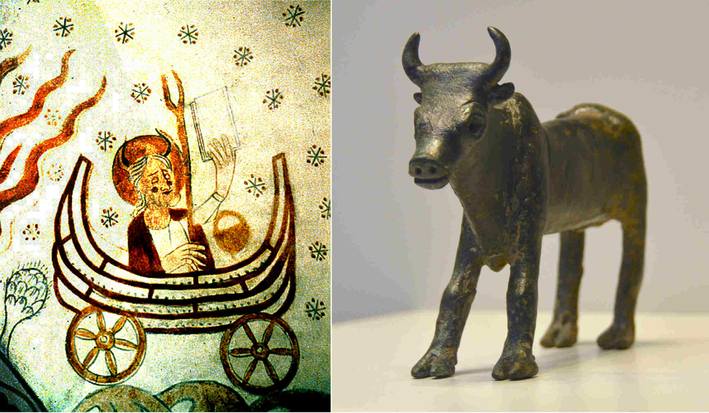
The above image representing Moses speeding up, while being comfortably installed, or "nestled" inside the Ark of the Covenant, is a perfect gift to illustrate the true nature of Moses: the block of stone which was indeed installed inside the wooden part of the impactor of the Great Pyramid of Egypt. Can any historian tell me what the hell is Moses doing transported inside the Ark of the Covenant?
Moses was the One supposed to build the Ark; he was not supposed to get inside and play with it.
But, as the Hebraic reinterpretation of the Osiris stone of the impactor, Moses is here actually represented with ram's horns and transported inside a speeding Ark of the Covenant (which is the wooden part of the impactor itself). The same horns as Yahweh's, who is represented here as a ramming bull, as the reinterpretation of the wooden and stone composite impactor itself.
Moses and the Ark of the Covenant. Kirkerup. c.1350. (image M-K 15-041 in the link). Sect 2, south arch, right. Moses, with nimbus and horns, seated in boat shaped cart with wheels, (ark of the covenant), left hand holds tablets of the law, right hand a fork, a basket under the tablets (image slightly edited for clarity): https://the-orb.arlima.net/encyclop/culture/artarch/danish/tomoses/tomoses.html
Early Iron Age bull figurine from Bull Site at Dhahrat et-Tawileh (modern West Bank, ancient Ephraim), representing El, Baal or Yahweh. Photograph by Nathaniel Ritmeyer: https://en.wikipedia.org/wiki/Yahweh#/media/File:Bull_site_statuette.png
41.03 When Moses is represented with the same horns as Yahweh's and nested inside a speeding wheeled-Ark of the Covenant it is nothing less than another reinterpretation of the ramming power of the speeding impactor
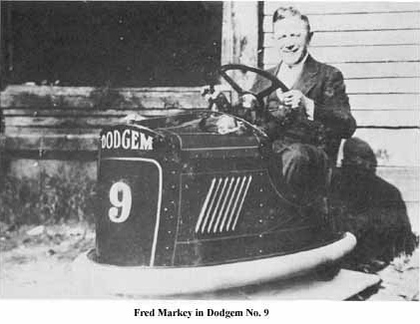
The above image, really is fantastic as we can see Moses inside the Ark of the Covenant, with his true nature actually perfectly represented: Moses was indeed inside the Ark, because Moses is the reinterpretation of the Osiris stone and the Ark of the Covenant, the reinterpretation of the composite impactor itself (previous Section 40).
It really doesn't trouble anyone that the "Great" Moses is represented speeding, nestled inside a wooden box which only measure 131 × 79 × 79 cm (52 × 31 × 31 inches)? Really, seriously?
Not only Moses is here represented securely transported inside the Ark, but also with the same ram's horns we've already seen so many times in the ancient Egyptian religion, as well as in the Hebraic deity Yahweh (another reinterpretation of the composite impactor, with all his ramming power, also in previous Section 40).
In other words, both above images are about the same thing:
• on the left, both parts of the impactor are represented, and Moses is the granite weight of the wooden impactor
• on the right, this is the composite impactor which is represented in the Yahweh deity, with all his ramming power
And there is another metaphor for the impactor of the Great Pyramid, a very modern one, entirely inspired by Moses inside his Ark: the Dodgem bumper car! Here, this is Fred Markey in his 1932 Dodgem bumper car: http://www.lusseautoscooters.com/html/legend_history.html
41.04 The "striking" power of Moses is about smiting things
Echoing to the ancient Egyptian god Medjed who was called "the Smiter", because he was one out of many deifications of the impactor, both the Ark of the Covenant and Moses are associated with smiting (previous Section 40), and striking: we'll see later in this post that Moses was supposed to "strike twice" the rock.
"Then Moses raised his hand and struck the rock twice with his staff, so that a great amount of water gushed out, and the congregation and their livestock were able to drink." Berean Standard Bible, at https://biblehub.com/numbers/20-11.htm
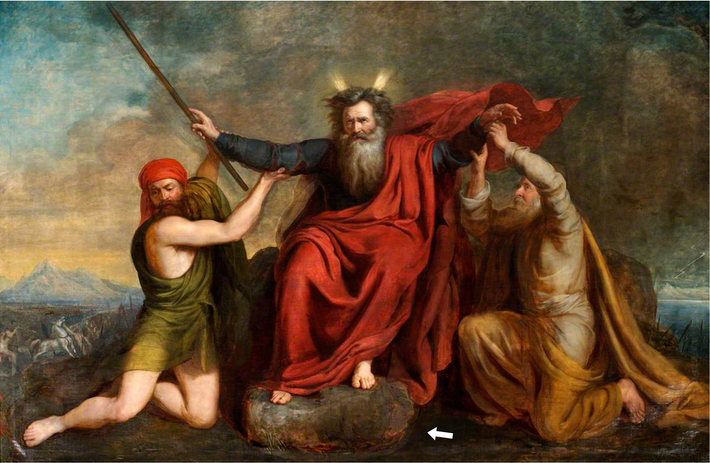
Moses with His Arms Supported by Aaron and Hur, by Thomas Brigstocke (1809–1881). Painting at the Aberystwyth University School of Art Museum and Galleries: https://artuk.org/discover/artworks/moses-with-his-arms-supported-by-aaron-and-hur-176504
"The Biblical story illustrated by this painting is told in Exodus, Chapter 17, and describes how Moses instructed Joshua to battle with Amalek whilst Moses held the rod of God on a nearby hilltop. As Moses raised his hands, Joshua prevailed. When he lowered them Amalek prevailed. As his hands became heavy Aaron and Hur supported them to enable Joshua and Israel to win the battle."
41.05 The inverted metaphor of Moses raising his rod: it really is the rod that is raising Moses
In order to understand the metaphor of the Staff of Moses, and what really represents the rod, we simply have to invert what is said in the following excerpt: "The rods of both Moses and Aaron were endowed with miraculous power during the Plagues of Egypt. God commanded Moses to raise his rod over the Red Sea when it was to be split and in prayer over Israel in battle; at Meribah Moses brought forth water from a stone using his rod." https://en.wikipedia.org/wiki/Aaron%27s_rod
Because we know that Moses is the reinterpretation of the Osiris stone of the impactor of the Great Pyramid, when it is asked to Moses to raise his rod, what it really means is the exact opposite: that is the rod which is raising Moses.
In other words, the Staff of Moses is the axle beam driving shaft of the Grand Gallery.
41.06 The endless trick of the double representation of a deity coupled with what he or she is really all about
Of course, you will note on the above painting representing "Moses with His Arms Supported by Aaron and Hur", by Thomas Brigstocke, that if Moses is resting his feet onto a big rock, it is only because Moses precisely is that rock.
Remember, we've already seen this trick many times now in the ancient Egyptian religion: here this is Moses represented onto what he is the glorification of (a block of stone), when we also had Bes represented onto what he is the glorification of (the wedging block for the Taweret block at the bottom of the operating inclined well), or Osiris represented standing onto what he was the glorification of (the Osiris stone itself, just like Moses).
41.07 The Staff of Moses, Aaron and God: three names for one single Staff of 293 kilograms
We've just seen in previous Section 40, that the Ark of the Covenant that appears in the Hebraic Bible, was another reinterpretation of the operating of the Great Pyramid's Grand Gallery, and in particular the operation of the impactor moving up and down the central wooden caisson of the Gallery.
At first, the Hebraic scriptures only refer to a wooden coffer designed to accommodate and protect the two Tablets of Stone with the Ten Commandments written on it, and it is only after a long period of time that other items are associated with the Ark, and one of them is Aaron's Rod, also known as the Staff of Aaron.
Scholars agree that Aaron's Rod is most probably the same artifact known as the Staff of Moses (also known as the Staff of God): all of these Staffs have the same properties and the same magical powers; but just like everything else we've seen so far, these Rods are of course nothing less than fully metaphorical in nature.
The first point that sustain the Staffs absolutely aren't about real walking staffs, is their weight: Aaron's Rod was indeed, supposed to weigh a little over 293 kilograms. Of course, I'm not a shepherd, but it still looks a little heavy for the job.
"Aaron's rod refers to any of the walking sticks carried by Moses's brother, Aaron, in the Torah. The Bible tells how, along with Moses's rod, Aaron's rod was endowed with miraculous power during the Plagues of Egypt that preceded the Exodus. Later, his rod miraculously sprouted blossoms and almonds to symbolize God's choice of Aaron and his tribe for holy service."
"In Israelite culture, the rod (Hebrew: מַטֶּה maṭṭeh) was a natural symbol of authority, as the tool used by the shepherd to correct and guide his flock. Moses, in fact, initially carried his rod while tending his sheep, and later it became his symbol of authority over the Israelites."
"The rods of both Moses and Aaron were endowed with miraculous power during the Plagues of Egypt. God commanded Moses to raise his rod over the Red Sea when it was to be split and in prayer over Israel in battle; at Meribah Moses brought forth water from a stone using his rod." https://en.wikipedia.org/wiki/Aaron%27s_rod
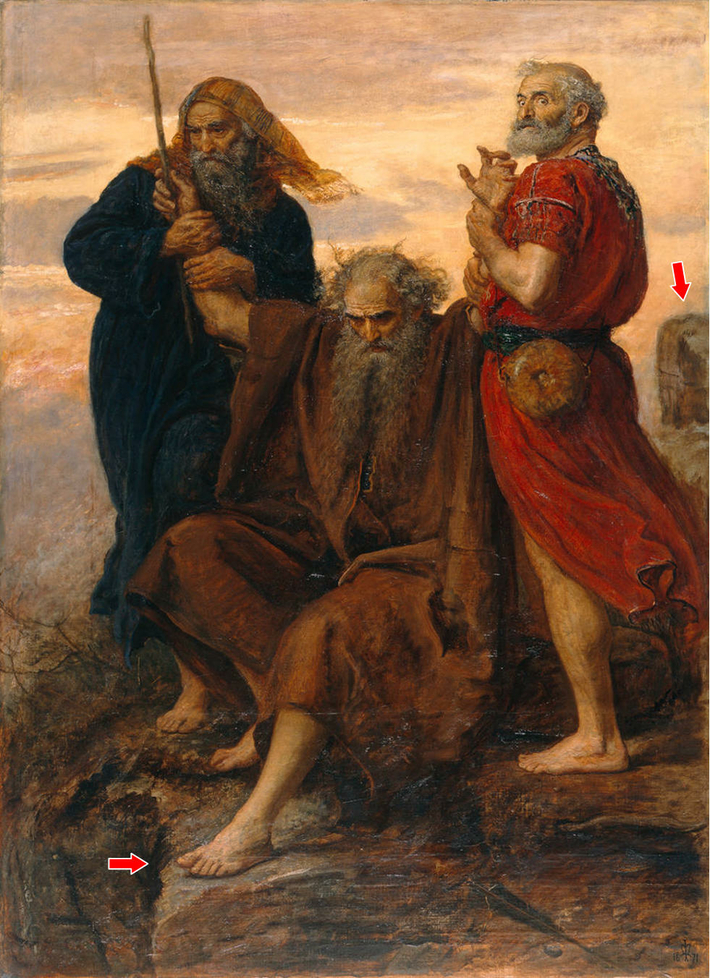
Victory O Lord!, 1871 painting by Sir John Everett (Millais 8 Jun 1829 - 13 Aug 1896), depicts Moses holding his staff, assisted by Aaron and Hur, holding up his arms during the battle against Amalek. A pre-raphaelite painting of a Biblical scene depicting Moses surveying the battle between Joshua and the Amalekites from the top of a hill. Moses, an old man with a long beard, sits on a rocky outcrop, accompanied by Aaron and Hur standing either side of him, holding his arms aloft to prevent the Victory of the Amalekites. There is an overcast sky in the background which is glowing yellow. Painting at the Manchester Art Gallery, England: https://manchesterartgallery.org/explore/title/?mag-object-179
41.08 Moses is the Osiris stone (that would have appeared in two parts, just like the Two Tablets of Stone)
Just like in the painting of the same biblical scene by Thomas Brigstocke, you'll note that Moses is putting his foot in direct contact with the rock, while Aaron and Hur are only touching soil; of course this is a direct illustration of the fact that the real nature of Moses, precisely is about that rock, the Osiris stone.
Also, it looks like on this painting that this very Osiris stone might have been represented as well (red arrow on the right); if you look closely, the rock is indeed showing a horizontal line of fracture, from which the two parts of the Osiris stone are appearing (there was only one stone, but half of the stone was imbedded in the lower part of the wooden part of the impactor, while the other half was imbedded in the top part of the impactor).
41.09 If Moses is about Osiris, then Aaron is about Ra and Hur about Horus: they are about the wooden vessel of the impactor
We've seen in previous Section 40, that contrary to what I expected, most of the weight of the impactor was in its wooden part (that is Ra): only about 41% (according to the measures of the Ark of the Covenant and the standard density of Tamarix wood and granite) was in the granite cube weight of the impactor (that is Osiris).
So, when it is said in ancient Egyptian texts that Ra got all its force, power and energy, it only has to be taken metaphorically, again.
From the ancient Egyptian point of view, only Osiris (the granite block) was important: it was Osiris, the magnificent granite cube with sides of 50 centimeters, in which was all the energy of the impactor; and from this very particular point of view, the wooden vessel Ra was seen as simply the tool needed to move and operate the granite block.
Here, on the above image, that is precisely that point of view which is displayed: Moses (the reinterpretation of the Osiris stone), is laying on the ground and cannot move without both Aaron and Hur, precisely because both are about the wooden part of the impactor.
In this very particular case, they didn't even tried very much to hide the original names of Aaron and Hur (just like the Norse mythology didn't try very much to hide the fact that Thor really is about Hathor). If ancient Egyptians deified the wooden part of the impactor in Ra, and the composite impactor itself in Horus, in their Hebraic reinterpretations:
• Just like Hathor became Thor in the Norse mythology
• Ra became Aaron
• Horus the child became Hur (Horus during the hauling process, raised to the top of the Gallery)
Simple and easy. So, if Moses (the Osiris stone) is represented raised by both Aaron and Hur, it is only because they both are another glorification of wooden part of the impactor, without which the Osiris stone (Moses) wouldn't have been able to be moved and raised to the top of the Grand Gallery.
Just as a reminder, we've also seen in previous Section 40 that Horus the Elder (Horus with all his force, ramming power and energy), has been reinterpreted into Yahweh who could be represented into a bull, just like the ancient Egyptian Apis bull.
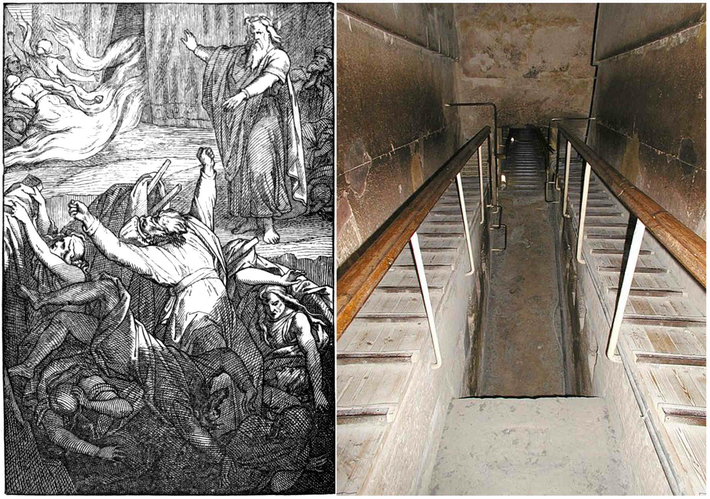
"The earth opened and swallowed up Korah, Dathan and Abiram", by Charles Foster: "The Story of the Bible from Genesis to Revelation", 1873: https://ufdc.ufl.edu/UF00027051/00001/images/153
The mouth of the "ascending passage" inclined well, in the northern wall of the Grand Gallery of the Great Pyramid of Giza; picture by Jon Bodsworth: https://commons.wikimedia.org/wiki/File:Embranchement-grande-galerie.jpg
41.10 Why Moses and Aaron are falling down before being swallowed by the opened mouth of the Earth after they have been raising above everybody: that is the complete operating cycle of the Great Pyramid's composite impactor
Of course, because we know now that Moses + Aaron = the impactor of the Great Pyramid which was endlessly released from the top of the Grand Gallery towards the mouth of the inclined well, the story about them both raising above everybody, before falling down and being swallowed by the opened mouth of the Earth, this whole story really takes a complete new meaning…
"Korach the son of Yitzhar, the son of Kehat, the son of Levi took [himself to one side] along with Dathan and Aviram the sons of Eliav, and On the son of Peleth, descendants of Reuben. They assembled against Moses and Aaron, and said to them, “You take too much upon yourselves, for the entire congregation are all holy, and the L‑rd is in their midst. So why do you raise yourselves above the L‑rd’s assembly?”. . . As soon as he finished speaking all these words, the earth beneath them split open. The earth beneath them opened its mouth and swallowed them and their houses, and all the men who were with Korach and all the property. (Numbers 16:1, 3, 31–32)" https://www.chabad.org/parshah/article_cdo/aid/2979099/jewish/The-Ground-Opens-to-Swallow-Korach-and-His-Followers.htm
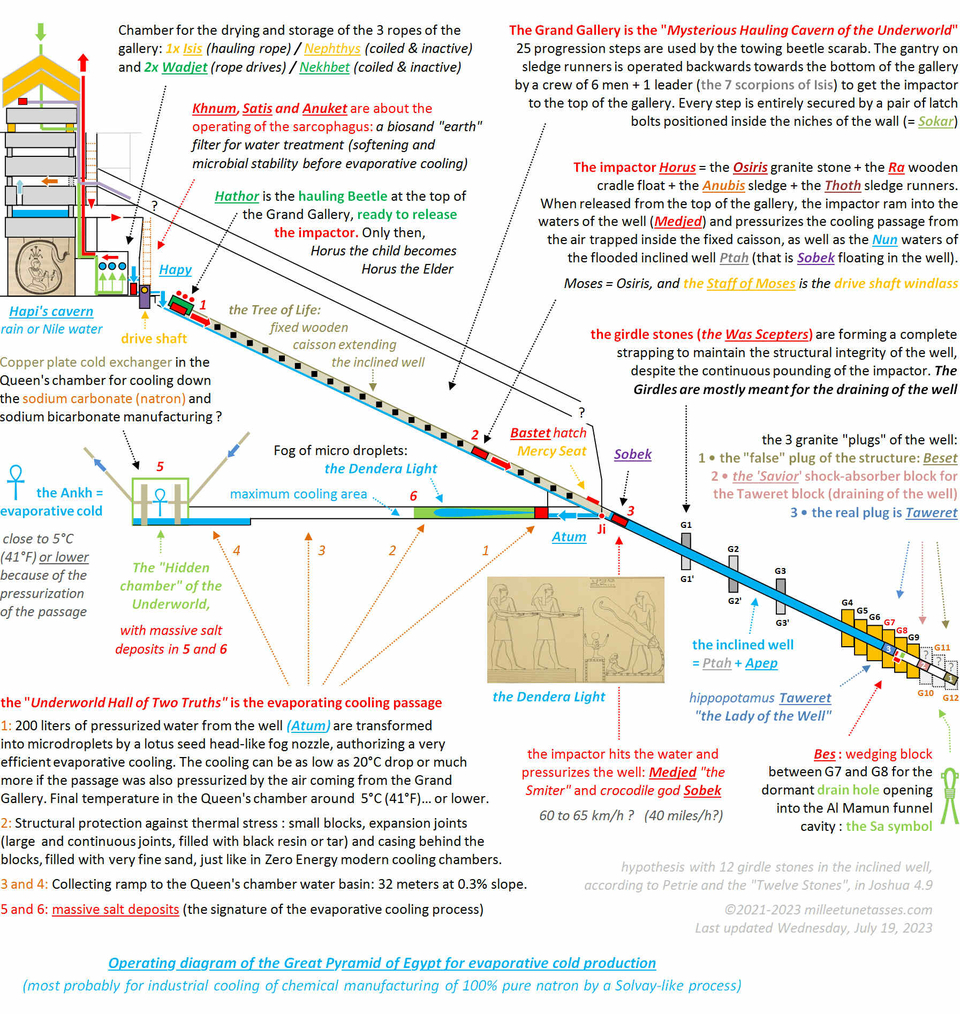
41.11 Operating diagram of the Great Pyramid of Egypt for Evaporative Cold Production
Evaporative cold may have been used for chemical manufacturing of the purest form of natron (pure sodium carbonate) by a Solvay-like process (the natron manufacturing is still hypothetical at that time, although highly probable). Natron was the salt used during mummification, and was part of the Egyptian blue pigment. Last updated Wednesday, July 19, 2023.
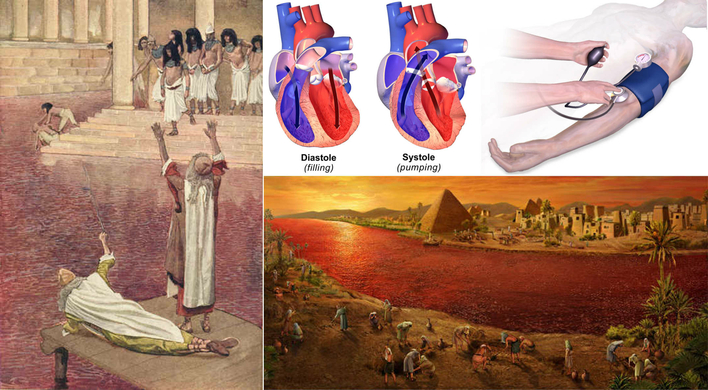
The First Plague: Water Is Changed into Blood, James Tissot: https://en.wikipedia.org/wiki/Plagues_of_Egypt#/media/File:Tissot_Water_Is_Changed_into_Blood.jpg
Blood pressure "systole vs diastole": https://en.wikipedia.org/wiki/Diastole#/media/File:Systolevs_Diastole.png
Exodus 7 – The First Plague: Blood: https://www.testifygod.org/the-first-plague-blood.html
Blood pressure, by BruceBlaus: https://commons.wikimedia.org/wiki/File:Blood_Pressure_-_Take_Another_Person.png
41.12 Because of the pressurization of the waters of the inclined well by the impactor Yahweh (who is Moses + Aaron), the well functioned just like a beating heart… and as a result, its waters were instantly turned into pure blood
Ok, so I know I've said that maybe a thousand times now, but the metaphor of "the Nile turning into blood" could be the most beautiful of all metaphors we've seen so far.
First, you have to really understand that the inclined well of the Great Pyramid was seen by ancient Egyptians as the real Heart of the Pyramid; simply because by pressurizing the waters of the well and ejecting a small amount of these waters every 15 to 20 minutes or so, the well was actually functioning just like a real beating heart.
In other words, the well gave life to the Great Pyramid.
So, when the impactor rammed into the well and pressurized its waters, hence transforming the well into a beating heart, the waters of the well were also transformed into blood.
And that is Moses (the granite weight of the impactor) and Aaron (the wooden part of the impactor), who made all this "magical event" happening, by using their Staff (the axle beam drive shaft windlass of the Grand Gallery).
The pressurization of the waters of the inclined well of the Great Pyramid, that is what the First Plague of Egypt is all about, because the well is the heart of the Pyramid.
"At the time of the plagues, the Israelites, who were God’s chosen people, were living as enslaved peoples in Egypt. They were undergoing a great deal of suffering and were crying out to God to save them from their circumstances. God heard their cries and appointed a man named Moses to lead them out of Egypt. Moses began by asking the Pharaoh to release the Israelites, but he refused. It was in response to the Pharaoh’s refusal that God sent the 10 plagues. The plagues were intended to force Pharaoh’s hand and make him release the Israelites from Egypt.
Water turned to blood: “Thus says the Lord, ‘By this you shall know that I am the Lord: behold, I will strike the water that is in the Nile with the staff that is in my hand, and it will be turned to blood. The fish that are in the Nile will die, and the Nile will become foul, and the Egyptians will find difficulty in drinking water from the Nile’” (Exodus 7:17-18).
The first plague to hit Egypt was the water of the Nile turning to blood. The Nile river was a life source for Egypt, and so this plague caused absolute disaster across the land. God used Moses and Aaron to bring about this plague. He sent them to the brink of the river Nile, where Aaron raised his staff and struck the water, which then turned it into blood. This plague caused all of the fish in the river to die and a stream of blood to flow throughout Egypt. This plague lasted for one whole week. Despite the horror, the Pharaoh refused to let the Israelites go."
https://www.twinkl.fr/teaching-wiki/the-10-plagues-of-egypt-in-order
"The Plagues of Egypt, in the account of the book of Exodus, are ten disasters inflicted on Biblical Egypt by the God of Israel in order to convince the Pharaoh to emancipate the enslaved Israelites, each of them confronting Pharaoh and one of his Egyptian gods; they serve as "signs and marvels" given by God to answer Pharaoh's taunt that he does not know Yahweh: "The Egyptians shall know that I am the LORD"
"Attempts to find natural explanations for the plagues (e.g., a volcanic eruption to explain the "darkness" plague) have been dismissed by biblical scholars on the grounds that their pattern, timing, rapid succession, and above all, control by Moses mark them as supernatural". https://en.wikipedia.org/wiki/Plagues_of_Egypt
"Moses and Aaron appear before the pharaoh, and Aaron's rod is transformed into a serpent. Pharaoh's sorcerers are also able to transform their own rods into serpents, but Aaron's rod swallows their rods (Exodus 7:10–12). Aaron's rod is again used to turn the Nile blood-red. It is used several times on God's command to initiate the plagues of Egypt." https://en.wikipedia.org/wiki/Staff_of_Moses
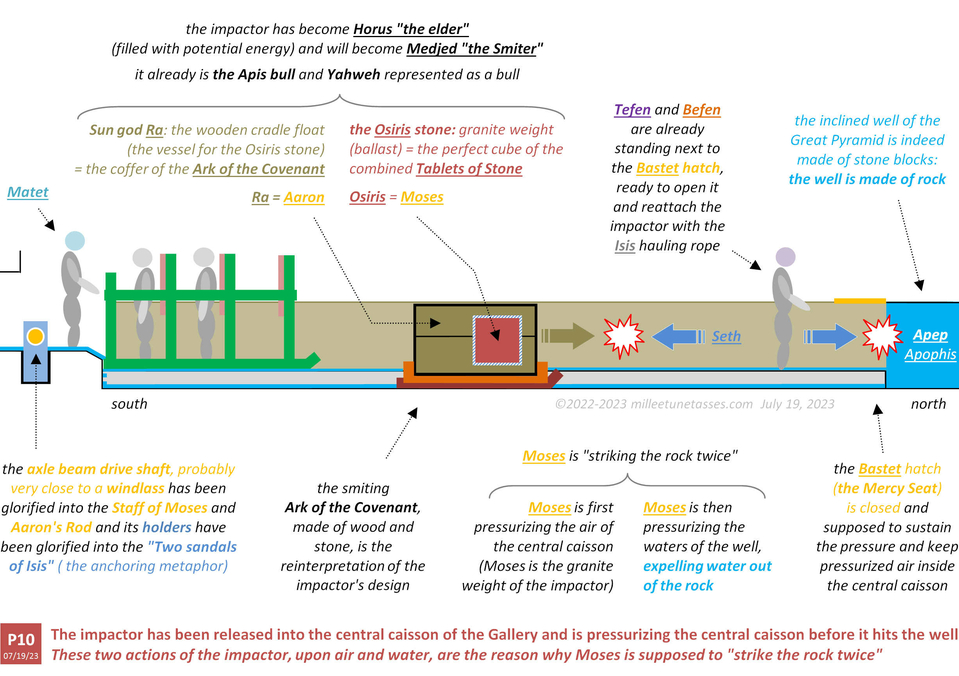
41.13 Operating diagram of the Great Pyramid of Egypt for Evaporative Cold production P10
Position P10 of the operating cycle, last updated July 19, 2023.
For the complete 10 operating phases of the Grand Gallery, please visit Section 26
41.14 Moses is "striking the rock twice" because the impactor is first striking the air before the waters of the well
The impactor has been released into the central caisson of the Gallery and is pressurizing the central caisson before it hits the well. These two actions of the impactor, upon air and water, are the reason why Moses is supposed to "strike the rock twice" to let "a great amount of water gushing out of the rock".
"Then Moses raised his hand and struck the rock twice with his staff, so that a great amount of water gushed out, and the congregation and their livestock were able to drink." Berean Standard Bible, at https://biblehub.com/numbers/20-11.htm
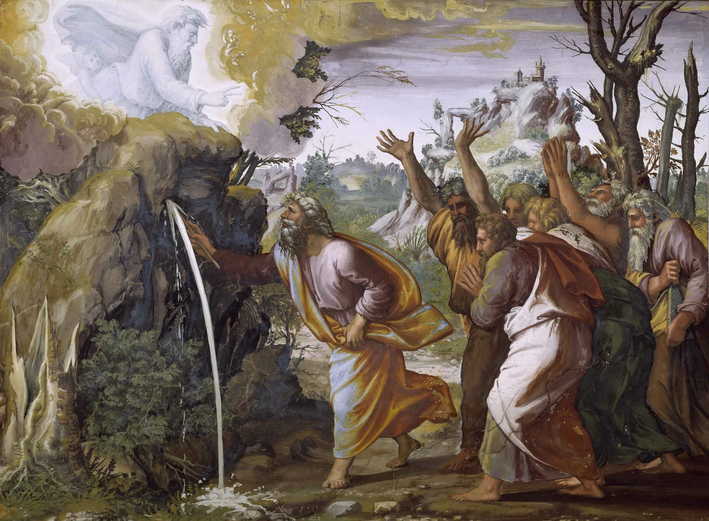
Moses expelling water out of rock with his Staff, or Aaron's Rod. Raffaello Sanzio, Decoration of the Loggia. Fresco, Palazzi Pontifici, Vatican: https://upload.wikimedia.org/wikipedia/commons/7/73/Loggia_di_raffaello%2C_08%2C_04.jpg
41.15 Moses expelling water out of rock with his Staff (or indifferently with Aaron's Rod) is about the 200 liters or so of pressurized water expelled out of the inclined well of the Great Pyramid (the well is indeed made of rock)
When reading the following excerpts, about the water being expelled out of the rock, remember that the inclined well of the Great Pyramid was indeed made of rock, that both the Staff of Moses and Aaron's Rod are mentioned, and that:
• Moses = the Osiris stone (the weight of the impactor)
• Aaron = the wooden part of the impactor (the impactor itself, so to speak)
• Yahweh = Moses + Aaron = the composite impactor
• The Staff of Moses = Aaron's Rod = the axle beam drive shaft windlass which is raising and "charging" the impactor
"The Biblical text mentions two very similar episodes that both occur at a place named Meribah. The episode recounted in Exodus 17 features the Israelites quarreling with Moses about the lack of water, and Moses rebuking the Israelites for testing Yahweh; verse 7 states that it was on this account that the place gained the name Massah, meaning testing, and the name Meribah meaning quarreling. This narrative states that on account of their thirst, the Israelites grumbled against Moses, so Moses, in fear for his life, appeals to Yahweh; the narrative continues with Yahweh telling Moses to walk ahead of the others and strike the rock at Horeb with his rod, and when Moses does this, it causes the rock to expel water."
"The episode recounted by the Book of Numbers features the Israelites quarreling with Moses and Aaron about the lack of water and food crops; the text states that Moses and Aaron responded by consulting Yahweh at the Tabernacle door, while prostrating themselves, and that Yahweh told them to take the rod, and speak to a particular rock while the people are gathered together in view of it. The narrative continues with Moses following the instructions to take Aaron's staff and to gather the Israelites, but instead of speaking to the rock, which Yahweh had stated would result in water flowing from it, Moses speaks to the crowd and strikes the rock, doing so twice, resulting in a strong flow of water."
https://en.wikipedia.org/wiki/Massah_and_Meribah
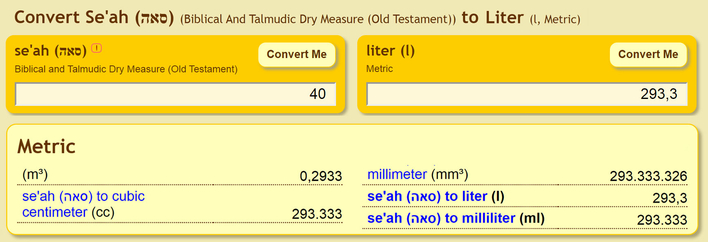
Converting 40 Se'ahs (סאה) (Biblical And Talmudic Dry Measure (Old Testament)) to Liter (l, Metric), edited for clarity: https://www.convert-me.com/en/convert/history_volume/bibseah/bibseah-to-liter.html?u=bibseah&v=40
41.16 Contrary to every representation of the Staff of Moses and Aaron, it actually weighed over 293 kilograms (646 pounds)
According to Wikipedia's page on Aaron's Rod, the Staff would have weighed 40x10.70= 428 pounds, which is about 194.14 kilos (https://www.unitconverters.net/weight-and-mass/lbs-to-kg.htm).
But it looks like at least two converter sites disagree with how much represents the Biblical And Talmudic Dry Measure (Old Testament) Seah: according to both Unit Converters (https://www.unitconverters.net/volume-dry/seah-biblical-to-liter.htm), and Convert Me (https://www.convert-me.com/en/convert/history_volume/bibseah/bibseah-to-liter.html?u=bibseah&v=40), 40 seahs is instead 293.33 kilograms (293.33 liters).
According to Go Web Tool (https://www.gowebtool.com/unit-conversion/volume/convert.php?from=seah_biblical_dry&to=gram_water&language=en), 40 seahs = 281.912 kg
But as many other online calculators are giving 293.33 liters as well (293.33 liters = 293.33 kilograms, or 646 pounds), I will consider this weight to be correct, until proven otherwise.
"Any analysis of the staff must begin with the Torah itself. In the Torah’s initial account, Moses’ staff appears to be nothing more than a shepherd’s rod. “What is that in your hand?” God asks Moses. He replies: “a staff” (Exodus 4:2). When God tells Moses to throw it to the ground and it becomes a snake, Moses runs away. He appears genuinely surprised. In this episode, the staff appears to be an ordinary object acted upon by God.
But the staff’s role grows and changes as the narrative progresses. God tells Moses to take the staff with him to Egypt, where he is to use it to perform the signs (Exodus 4:17). Up until now, the staff had only been associated with one sign—its transformation into a snake—but this verse foreshadows its expanded role in several of the plagues. When Moses and Aaron use their staffs to bring the plagues of blood, frogs, lice, hail, and locust, it is no longer a passive object acted upon by God, but an active tool used to bring about God’s will.
A few verses later (Exodus 4:20), the Torah refers to the staff as matteh ha-Elokim. This phrase simply means the “staff of God,” which is consistent with the staff’s prior transformation and its upcoming role in the plagues. However, it could also be translated, as it is in the Septuagint, as “the staff from God,” perhaps hinting to a divine origin.
Indeed, several midrashim see the phrase matteh ha-Elokim as indicating that Moses’ staff was never an ordinary shepherd’s crook, but was God’s scepter that He granted to Moses. According to other midrashim, it weighed forty seah (of water; making it very large), was made of sapphire, and was inscribed with either the name of God or the acronym for the ten plagues known from the Haggadah—detza”kh, ada”sh, be-aha”v. The staff was not only divine, but also powerful; Midrash Tanhuma writes that God told Moses that he would be able to perform any miracle he desired with it."
https://thelehrhaus.com/scholarship/the-life-and-death-of-moses-staff/
"Rabbinic midrash described attributes of Aaron's rod beyond those in the Biblical text. It is reported that the rod was made of sapphire, weighed forty seahs (a seah = 10.70 pounds), and bore the inscription דצ״ך עד״ש באח״ב (the initials of the Hebrew names of the Ten Plagues)." https://en.wikipedia.org/wiki/Aaron%27s_rod
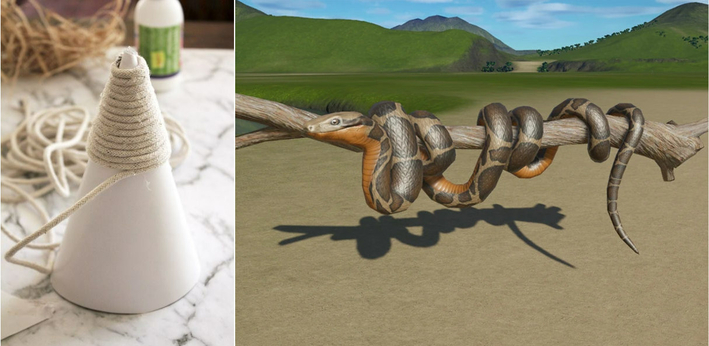
How to make a rope tree, DIY by Emily Connett: https://www.dossierblog.com/12-diys-of-christmas-1-raffia-rope-trees/
Snake Animatronic Tree Branch: https://planetcoaster.fandom.com/wiki/Snake_Animatronic_Tree_Branch
41.17 The fight between the Staff and the snakes is about the endless cycle of operation of the ropes upon the wooden windlass
I don't know why, but this part is becoming my favorite among all the many metaphors we've seen so far; maybe because it is describing the very intimate operating of the ropes that were endlessly winding up upon the drive shaft, for just a moment later unwind another time in the other part of the operating cycle.
Also this snake metaphor is very easy to understand and apprehend, everyone would be able to see the winding of the ropes when they would hear about the snake eating the wooden Staff; and everyone would be able to see the unwinding of the ropes when would hear about the wooden Staff eating the snake. This really is a beautiful metaphor.
"Moses and Aaron appear before the pharaoh, and Aaron's rod is transformed into a serpent. Pharaoh's sorcerers are also able to transform their own rods into serpents, but Aaron's rod swallows their rods (Exodus 7:10–12)." https://en.wikipedia.org/wiki/Staff_of_Moses
"The next staff story is in Va Era, Exodus 7:10. Now, confronting Pharaoh, Aaron throws down his staff, it turns into a snake, Pharaoh’s magicians do the same with their staffs, and then Aaron’s snake eats the others before reverting to a staff." https://agudasachimic.org/2022/07/14/the-staff-of-moses/
"God instructed Moses to go before Pharaoh and command him to release His people so that they could worship Him. As with most of us, myself included, Moses immediately began to give excuses as to why this assignment was not for him. But Moses protested to God, "Who am I to appear before Pharaoh? Who am I to lead the people of Israel out of Egypt?" Exodus 3:11 NLT
Even after God assured him that He would be with him as he went to Egypt and after He gave him the play by play of exactly what to say and what would happen, Moses still came up with more excuses. The Israelites will not believe God sent him. They will not listen to him. He stutters when he talks. Yet God patiently responds each time he came up with a reason not to obey. The thing that resonates with me the most today though, is found in Exodus 4:1-4
But Moses protested again, "What if they won't believe me or listen to me? What if they say, 'the Lord never appeared to you'?" Then the Lord asked him, "What is that in your hand?"
"A shepherd's staff," Moses replied.
"Throw it down on the ground," the Lord told him. So Moses threw down the staff, and it turned into a snake! Moses jumped back. Then the Lord told him, "Reach out and grab its tail." So Moses reached out and grabbed it, and it turned back into a shepherd's staff in his hand." https://www.godistheartist.com/post/throwdownyourstaff
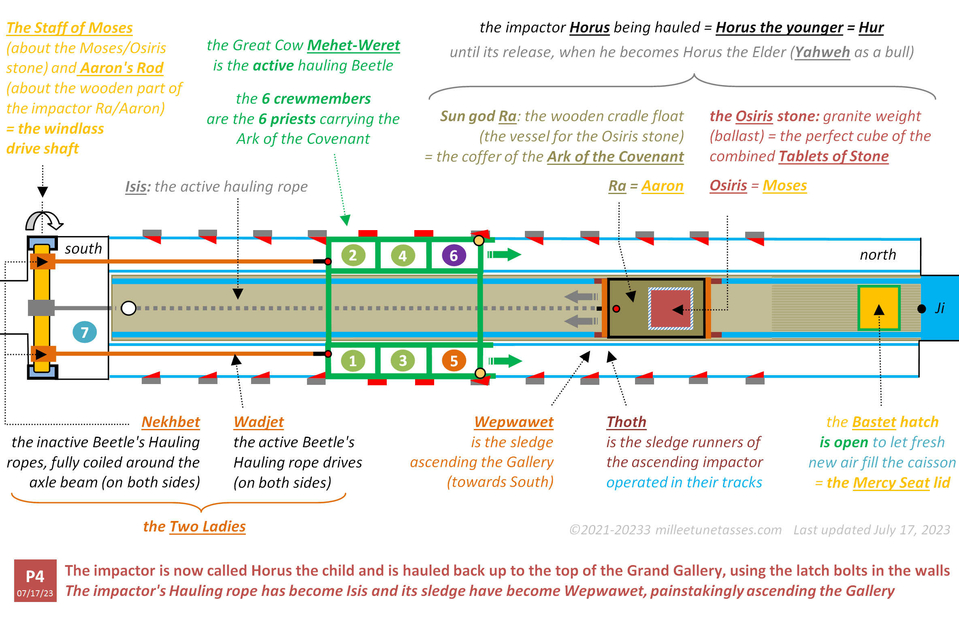
41.18 Operating diagram of the Great Pyramid of Egypt for Evaporative Cold production P4
Position P4 of the operating cycle, last updated July 16, 2023.
For the complete 10 operating phases of the Grand Gallery, please visit Section 26
41.19 There isn't a "Staff broken into three pieces", but three different functioning areas upon one single wooden windlass shaft
Again, this is a very easy metaphor: when it is said that the Staff was supposed to be broken in two places, forming three pieces, of course this is not really about the shaft itself, but rather because there really were three ropes. It only looked like there were three pieces.
Although from an operating point of view, there really were three different functioning areas within the same wooden windlass structure.
'Within the Ark of the Covenant is a vessel of gold containing a measure of the manna which came down from Heaven; the rod of Aaron which sprouted after it had become withered though no-one watered it, broken in two places it became three rods being originally only one rod.'
http://www.greatdreams.com/aarons-rod.htm
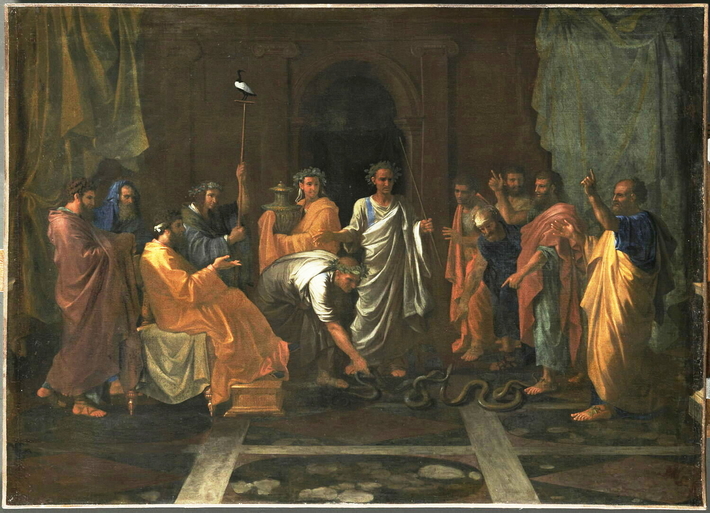
Moses changing Aaron's Rod into snakes, in a painting by Nicolas Poussin (1646 or 1647), at the Louvre Museum (here slightly edited on luminosity and color for enhanced clarity): https://collections.louvre.fr/ark:/53355/cl010062527
41.20 Why Moses is asked to "throw down his Staff" and "grab the tail of the Staff which had become a snake"
The following excerpt from "God is the Artist", is another fantastic source of information, because God is asking Moses to throw down is Staff on the ground. It is fantastic, because it is simply indicating exactly where was supposed to be operated the 293 kilograms Staff: flat, on the ground.
It is also fantastic because Moses (the reinterpretation of the Osiris stone nestled inside the wooden composite impactor), is also asked to grab the tail of the snake, in other words it is asked to Moses to grab the rope.
Remember, that rope (the hauling rope), wasn't glorified by ancient Egyptians into Isis yet: this rope was Hatmehit, and she was coming from the unwinding of the drive shaft. In other words, the "snake" (the rope), disappeared little by little from the shaft, and as a consequence, when Moses is grabbing the tail of the snake, "it turned back into a shepherd's staff in his hand".
"God instructed Moses to go before Pharaoh and command him to release His people so that they could worship Him. As with most of us, myself included, Moses immediately began to give excuses as to why this assignment was not for him. But Moses protested to God, "Who am I to appear before Pharaoh? Who am I to lead the people of Israel out of Egypt?" Exodus 3:11 NLT
Even after God assured him that He would be with him as he went to Egypt and after He gave him the play by play of exactly what to say and what would happen, Moses still came up with more excuses. The Israelites will not believe God sent him. They will not listen to him. He stutters when he talks. Yet God patiently responds each time he came up with a reason not to obey. The thing that resonates with me the most today though, is found in Exodus 4:1-4
But Moses protested again, "What if they won't believe me or listen to me? What if they say, 'the Lord never appeared to you'?" Then the Lord asked him, "What is that in your hand?" "A shepherd's staff," Moses replied.
"Throw it down on the ground," the Lord told him. So Moses threw down the staff, and it turned into a snake! Moses jumped back. Then the Lord told him, "Reach out and grab its tail." So Moses reached out and grabbed it, and it turned back into a shepherd's staff in his hand." https://www.godistheartist.com/post/throwdownyourstaff
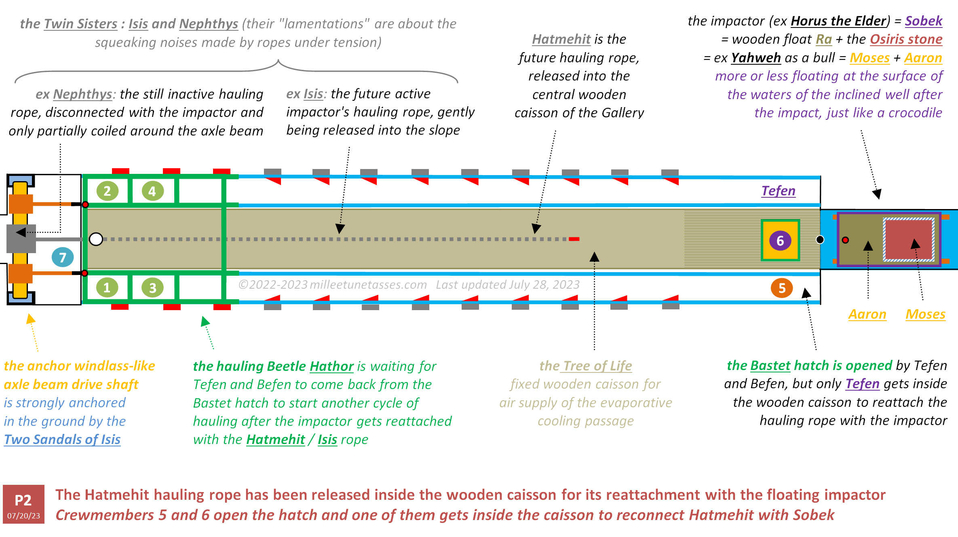
41.21 Operating diagram of the Great Pyramid of Egypt for Evaporative Cold production P2
Position P2 of the operating cycle, last updated July 28, 2023.
For the complete 10 operating phases of the Grand Gallery, please visit Section 26
41.22 The staffs of Pharaoh's magicians are about the Nekhbet (inactive) and Wadjet (active) rope drives
In the following excerpt, Pharaoh's magicians do the same thing: they throw their own staff on the ground; and because we've already been told that they actually were not one but three pieces of the Staff, it means that were two magicians, two additional staffs and two additional snakes.
That my friend, is the complete operation of the drive shaft of the Great Pyramid: the Magicians are about the two parts of the hauling Beetle; their staffs are the lateral parts of the drive shaft and their own snakes (their ropes) are about the two rope drives (the inactive Nekhbet, and the same but active Wadjet ropes).
"The next staff story is in Va Era, Exodus 7:10. Now, confronting Pharaoh, Aaron throws down his staff, it turns into a snake, Pharaoh’s magicians do the same with their staffs, and then Aaron’s snake eats the others before reverting to a staff." https://agudasachimic.org/2022/07/14/the-staff-of-moses/
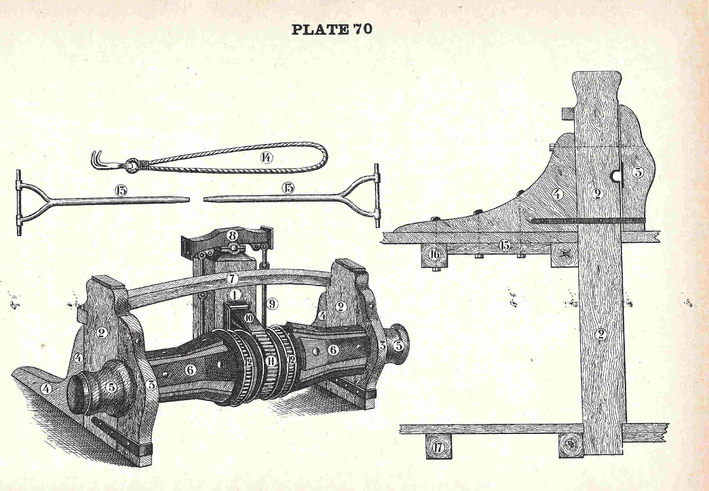
Draw of a common wooden windlass, by Captain Paasch, Heinrich, 1835-1904, Illustrated Marine Encyclopedia, Antwerp, 1890, Plate 70: https://commons.wikimedia.org/wiki/File:Paasch_Illus_Mar_Ency_1890_pl_70_-_Common_wooden_windlass.jpg
1. Pawl-bitt; Pall-bitt. 2. Carrick-bitts. 3. Cheeks (of Carrick-bitts). 4. Standard-knees (of Carrick-bitts). 5. Windlass-ends. 6. Whelps (on main-piece of windlass). 7. Strong-back. 8. Crosshead. 9. Purchase-rod. 10. Pawl; Pall. 11. Pawl-rim. 12. Purchase-rims. 13. Hand-levers. 14. Chain-stopper. 15. Beam-carling. 16. Upper-deck-beam. 17. Lower-deck-beam
41.23 The wooden windlass model of the Grand Gallery's drive shaft
There are two things interesting to note about the above drawing of a common wooden windlass
1 • The pawl (10) and pawl-rim (11) system of the windlass, which allows a sequential operation of the device has been "externalized" in the Great Pyramid where it was the latch bolts inserted in the niches of the wall of the Grand Gallery which were interacting with appropriate pieces of equipment mounted on the base of the hauling Beetle.
2 • The standard-knees of Carrick-bitts (4) designed to obtain stability and balance to the device could explain why the drive shaft would have been set so far away from the "big step" northern end of the platform, hence the closest to the south wall of the Grand Gallery.
"The windlass is an apparatus for moving heavy weights. Typically, a windlass consists of a horizontal cylinder (barrel), which is rotated by the turn of a crank or belt. A winch is affixed to one or both ends, and a cable or rope is wound around the winch, pulling a weight attached to the opposite end." https://en.wikipedia.org/wiki/Windlass
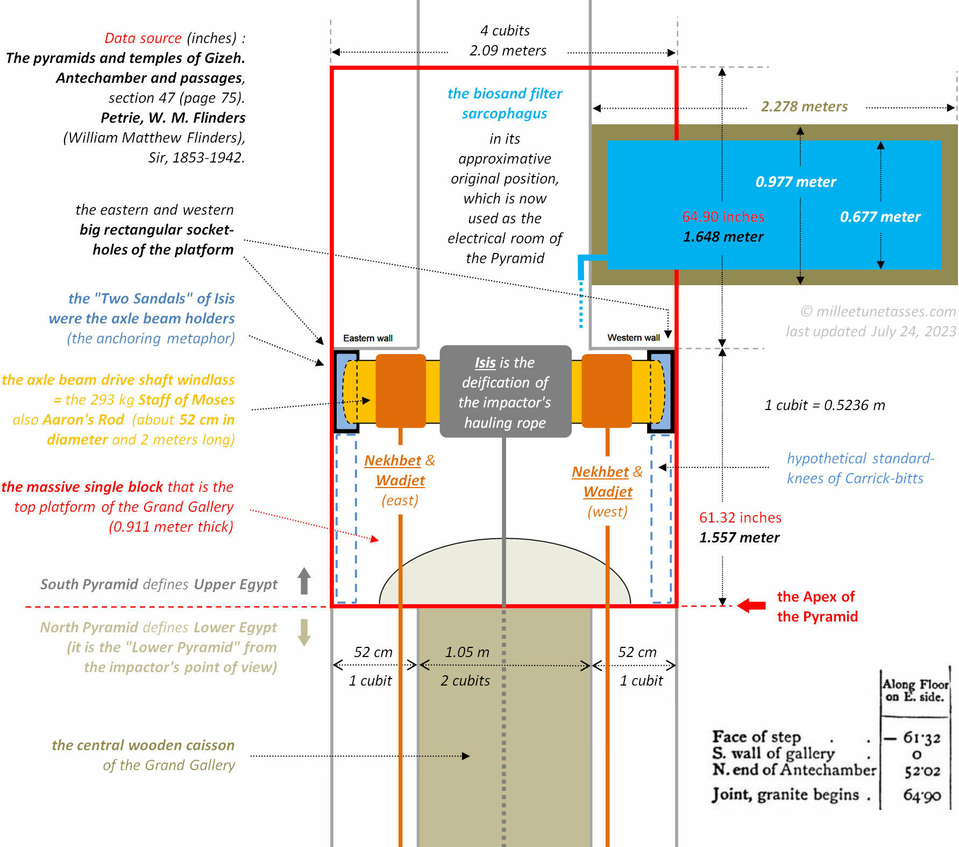
Diagram of the operating platform of the Grand Gallery inside the Great Pyramid of Egypt, at Giza. Last updated July 24, 2023
41.24 The operating diagram of the top platform of the Grand Gallery showing the 293 kg drive shaft windlass
This is an updated version of the platform's draw. I need to apologize for the earliest versions of the draw, in which I so badly represented the actual size of the biosand filter sarcophagus; in my mind I only wanted to indicate its original location and I didn't pay any attention to its dimensions. In the above diagram, its location is still approximative.
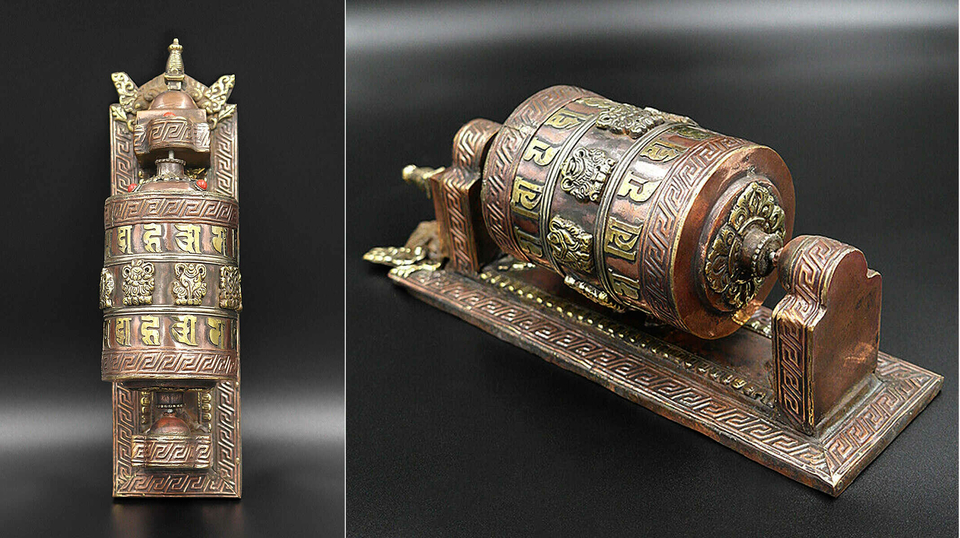
The "wall mounted" Tibetan prayer wheels were of course supposed to be fixed on the floor, not on the wall: they are the perfect reproduction of the axle beam driving shaft of the Grand Gallery. The 3 ropes are even perfectly depicted with a big central rope and two smaller lateral ropes.
41.25 The reinterpretation of the Staff of Moses and Aaron's Rod into the Tibetan prayer wheels
Please read Section 38 for that matter.
"Copper wall mounted prayer wheel with Om mane peme hum mantra in Newari (Ranjana) lipi. The Buddhist stupa in the top of the prayer wheel makes this as nice religious home décor. This handmade prayer wheel can be placed on the wall in your prayer room, meditation room or in the living room. The prayer wheel is filled with a mantra roll printed with the compassion mantra of Chenrezig, Om Mani Padme Hum. This prayer wheel is handmade in Nepal. The prayer wheel has 2 lines Om Mani Mantra Tibetan Mantra and 1 line Auspicious Symbol in the center. Worshippers turn prayer wheels to accumulate merit, to help all beings in the world and to purify their karma (intentional actions). They are part of a meditation." https://vajracrafts.com/products/buddhist-copper-prayer-wheel-with-wall-mount
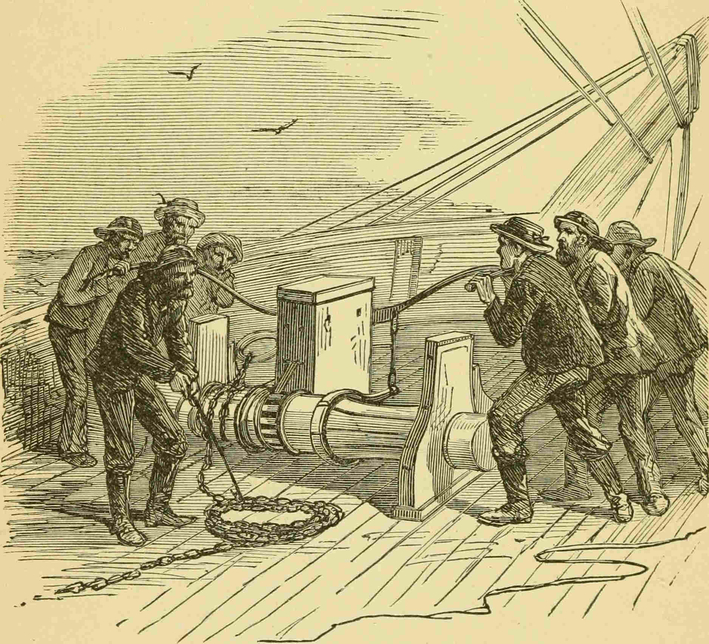
Right image of a wooden windlass, from page 29 of "Cast away in the cold: an old man's story of a young man's adventures, as related by Captain John Hardy, mariner" (1868), Hayes, I. I. (Isaac Israel), 1832-1881: https://www.flickr.com/photos/internetarchivebookimages/14759805626/
41.26 Seven teammates with two facing teams of three workhorses and a leader... but just a happy coincidence!?
I really like this drawing, because if you look attentively, there are three men on one side and three other men on the other side who are doing all the hard labor to operate the windlass, and there is a seventh man leading the party… just like the six crewmembers who were hauling the Beetle in the Great Pyramid, under the supervision of Matet, the seventh teammate (the seventh Scorpion of Isis).
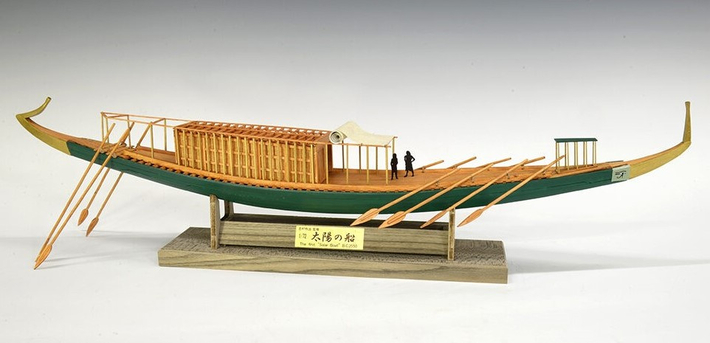
Wooden model of the Khufu ship solar boat: https://www.japan-wooden-model-kits-zootoyz.shop/contents/en-us/p1657_Khufu-ship-Wooden-Museum-Model-Kits-by-Woody-JOE.html
"The Khufu ship is an intact full-size solar barque from ancient Egypt. It was sealed into a pit alongside the Great Pyramid of pharaoh Khufu around 2500 BC, during the Fourth Dynasty of the ancient Egyptian Old Kingdom. Like other buried Ancient Egyptian ships, it was part of the extensive grave goods intended for use in the afterlife. It measures 43.4 meters (142 ft) long and 5.9 metres (19 ft) wide. It was thus identified as the world's oldest intact ship and has been described as "a masterpiece of woodcraft" that could sail today if put into a lake, or a river. However, the vessel may not have been designed for sailing, as there is no rigging, or for rowing, as there is no room." https://en.wikipedia.org/wiki/Khufu_ship
41.27 The Great Pyramid and the boat building knowledge
What is fascinating is that when you start to add up the sailing metaphors (Isis being called "the Great Mooring post", among others), to the sailing equipments of the Grand Gallery (the ropes, the windlass drive shaft…), you start to think that ancient Egyptians "simply" replicated their deep boat building knowledge right into the Grand Gallery.
And you start as well to better understand why god of the Nile Hapi had such a big importance: today, the Great Pyramid isn't associated at all with water, but 4,500 years ago, she was all about water, and in some ways the crewmembers of the hauling Beetle could have been seen more as sailors than anything else.
They were kind of navigating inside the Great Pyramid, so to speak; and that is echoing to Section 27, about the real meaning of the Guide to the Afterlife.
The "mooring" metaphor about Isis, is perfectly documented in ancient Egyptian literature: "Isis is not just about rebirth and sunrise. She is also the Great Mooring Post". https://isiopolis12.rssing.com/chan-10218340/all_p4.html
Also, a very detailed study "When Isis "Moored" Osiris", by L. D. Graham - JEOL. Excerpt: "The present paper, which is philological in nature, addresses a central event in the Osiris myth as it is narrated in the Great Hymn on the Stele of Amenmose. Specifically, the Great Hymn says (in line 15) that, when Isis eventually located Osiris’s body after his murder by Seth, she “moored her brother”. https://hcommons.org/deposits/objects/hc:47012/datastreams/CONTENT/content
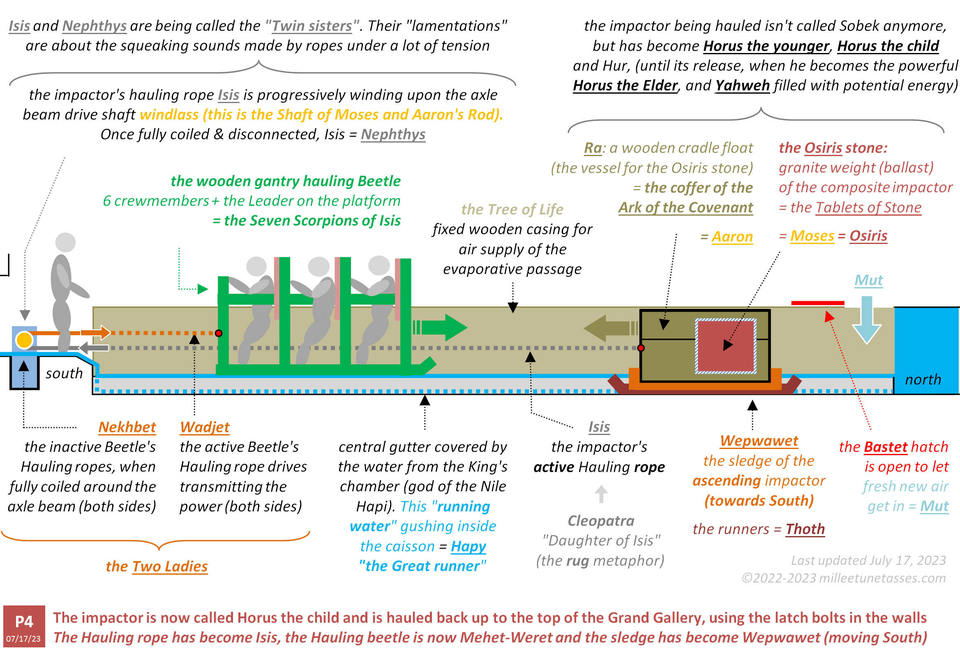
The Grand Gallery of the Great Pyramid of Egypt and its wooden and stone composite impactor were operated by seven teammates.
41.28 Operating diagram of the Great Pyramid of Egypt for Evaporative Cold production P4
Position P4 of the operating cycle, last updated July 17, 2023.
For the complete 10 operating phases of the Grand Gallery, please visit Section 26
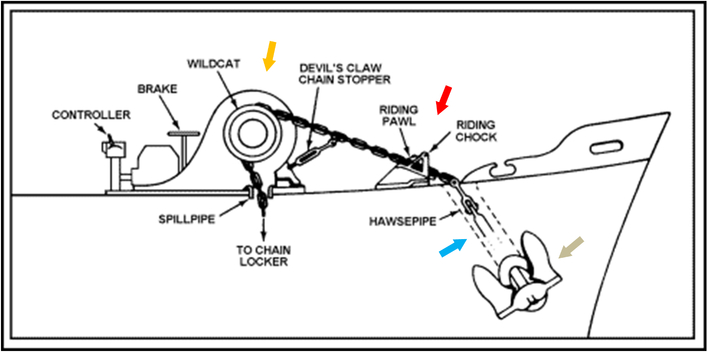
Figure 21-8. Side view of a horizontal shaft anchor windlass: https://www.globalsecurity.org/military/library/policy/army/fm/55-501/chap21.htm
41.29 In many ways, the impactor of the Great Pyramid was operated just like an anchor
I wondered for a very long time why would the drive shaft of the Grand Gallery have been installed so far away from the northern edge of the platform, and so close to the southern wall of the Gallery; but with the comprehension that the shaft could have had a design very close to the one of a modern anchor windlass, I have the explanation now: there had to be an additional and massive piece of equipment to manage the Isis hauling rope in the change of direction of the traction forces when approaching the elevation level of the platform.
Probably they needed some level of parallelism between the lateral drive ropes (Wadjet) and the hauling rope (central Isis).
Also, it is striking to observe the similarity of the whole anchor windlass thing and the whole design of the Grand Gallery's operation. It is almost like the Gallery had been totally inspired in its design by the operation of the anchor itself on a ship: just substitute the anchor of a ship with the impactor and the design of the anchor windlass is now the same one as in the Great Pyramid.
And in some ways, the impactor was indeed operated just like an anchor.
Would that be possible? Would ancient Egyptians have already developed such equipment aboard their ships? Or such equipments would have developed after and because of the Pyramid?
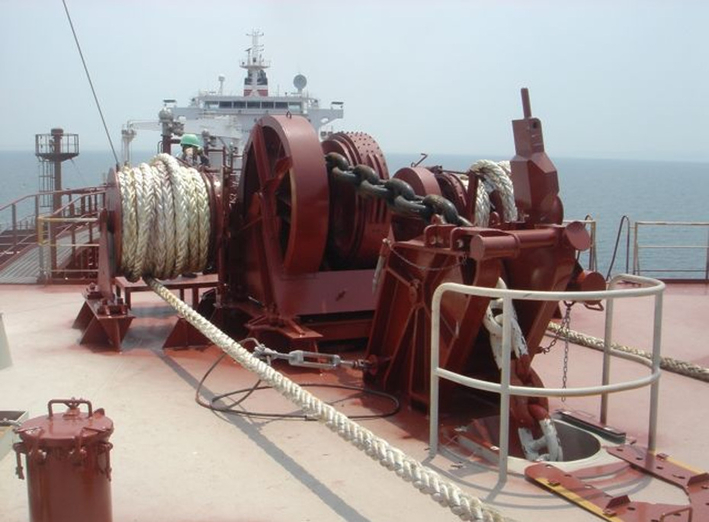
Ship Windlass at: https://dieselship.com/uncategorized/ship-windlass/
"Windlass seating: the forces acting on the windlass when the ship is anchored is much more than the mass of the windlass and hence has to be specially strengthened".
41.30 The wooden Staff of Aaron was also associated with extreme anchoring capability and led to the legend of Excalibur
These are the remarks of Stefan A. H. Holmgren (The Khufu Pyramid) about the huge structure that is the platform of the Grand Gallery in the Great Pyramid:
"I think it is an interesting structure as the Southern wall secure the top stone and prevents the stone from moving - especially downwards into the depths of the Grand Gallery. The top stone could withstand a huge downwards force during the construction of the pyramid. Are there any indications of forces which had been applied to the top stone?"
https://khufupyramid.dk/inside-dimensions/grand-gallery
And there is an excerpt about the "marvelous" anchoring capability of Aaron's Rod:
"Rabbinic midrash described attributes of Aaron's rod beyond those in the Biblical text. It is reported that the rod was made of sapphire, weighed forty seahs (a seah = 10.70 pounds), and bore the inscription דצ״ך עד״ש באח״ב (the initials of the Hebrew names of the Ten Plagues). God created it in the twilight of the sixth day of Creation, and delivered it to Adam when the latter was driven from paradise. After it had passed through the hands of Shem, Enoch, Abraham, Isaac, and Jacob successively, it came into the possession of Joseph. On Joseph's death the Egyptian nobles stole some of his belongings, and, among them, Jethro appropriated the staff. Jethro planted the staff in his garden, when its marvelous virtue was revealed by the fact that nobody could withdraw it from the ground (compare "the sword in the stone"); even to touch it was fraught with danger to life." https://en.wikipedia.org/wiki/Aaron%27s_rod
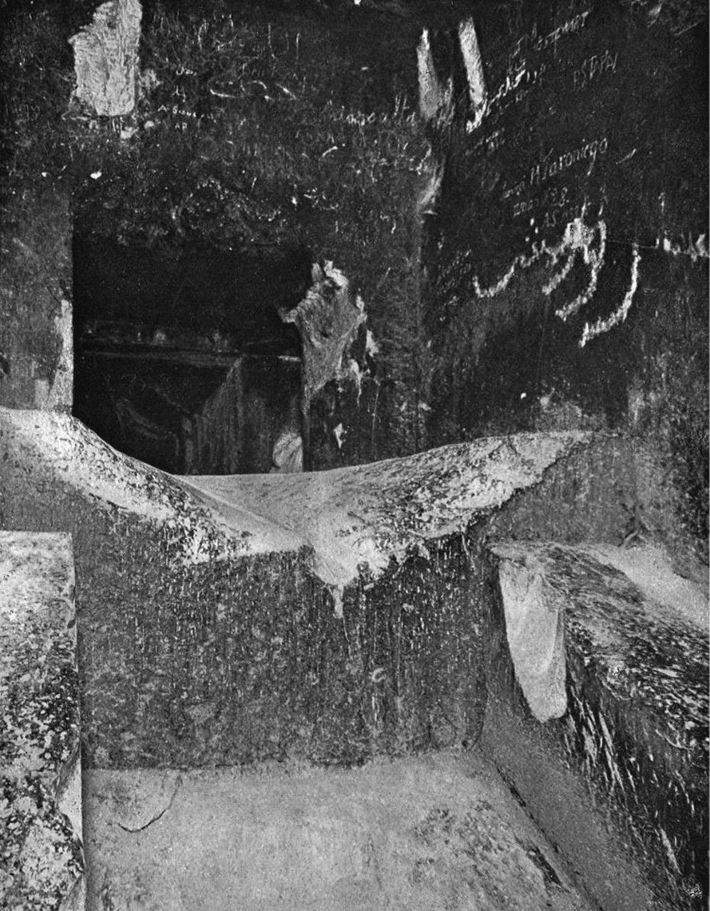
"The STEP at the head of the Grand Gallery at the Great Pyramid of Gizeh; showing the Ramps terminating against its north front; and the low passage leading horizontally southward to the Ante-Chamber." Great Pyramid Passages Volume 1 1910 edition, page 238 (Plate CXVI), by John and Morton Edgar: https://archive.org/details/GreatPyramidPassagesVol11910Edition/page/n246/mode/1up
41.31 The cut in the massive stone of the platform of the Grand Gallery
Of course, it is difficult not to see the similarity of the cut that has originally been made in the top stone of the Grand Gallery (before it has been recently modified, and "hidden" with concrete), with the part where on a modern ship, the anchor's chain is passing from the deck to the hawsepipe.
It certainly had to do with the operation of the central hauling rope.
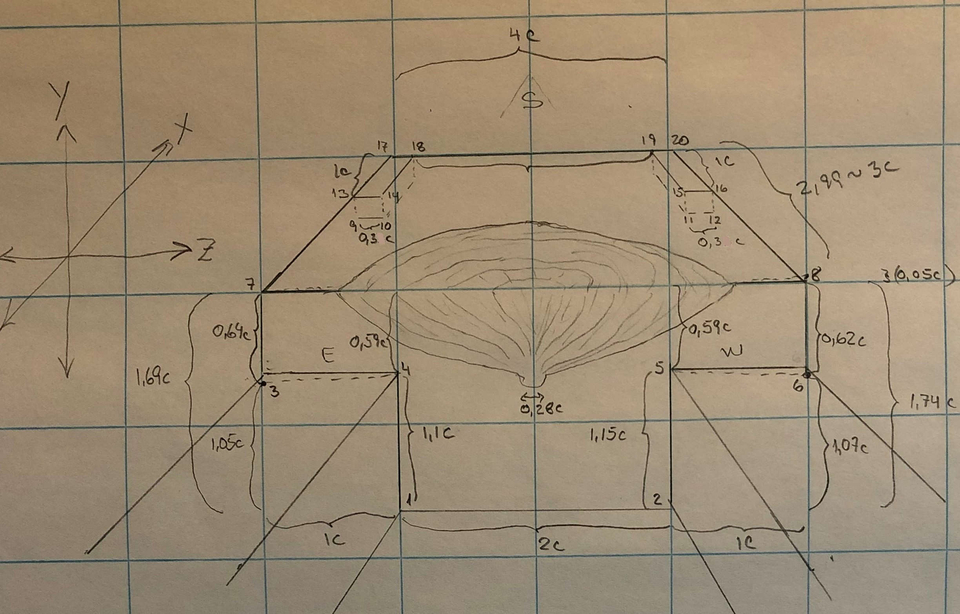
Draw by Stefan A. H. Holmgren (The Khufu Pyramid): https://khufupyramid.dk/inside-dimensions/grand-gallery
41.32 The wooden Staff of Aaron was also associated with extreme anchoring capability and led to the legend of Excalibur
These are the remarks of Stefan A. H. Holmgren (The Khufu Pyramid):
"I think it is an interesting structure as the Southern wall secure the top stone and prevents the stone from moving - especially downwards into the depths of the Grand Gallery. The top stone could withstand a huge downwards force during the construction of the pyramid. Are there any indications of forces which had been applied to the top stone?"
https://khufupyramid.dk/inside-dimensions/grand-gallery
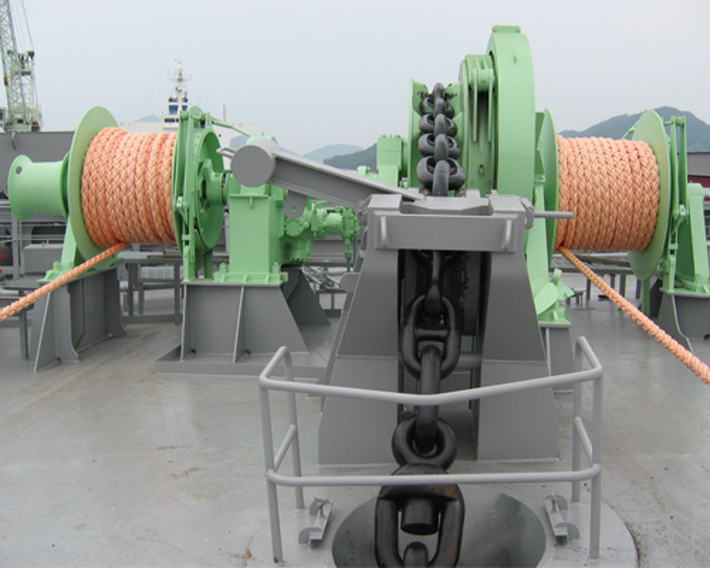
The perfect illustration of the extreme anchoring capability of the windlass Staff of Moses and Aaron (the massive grey structures on the picture). Hydraulic windlass from Jiangsu Masada heavy lndustries: http://en.masada.cn/product.php?cid=46
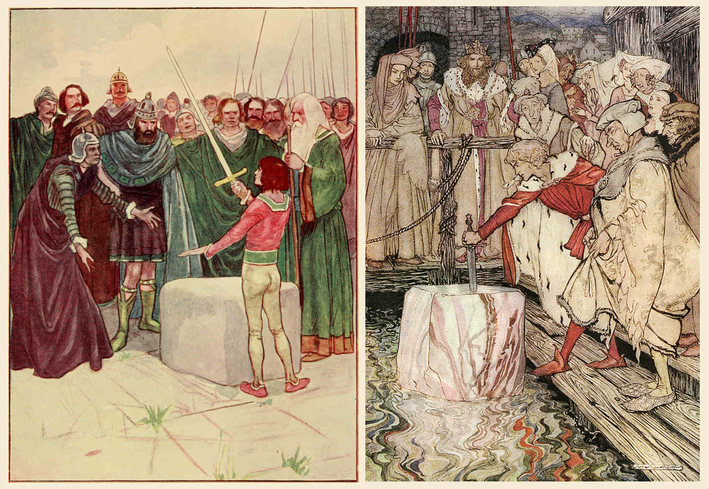
"Arthur draws the sword from the stone in Henrietta Elizabeth Marshall's Our Island Story (1906). Here, as in many more modern depictions of this scene, there is no anvil and the sword is lodged directly within the stone itself". Image from page 80 of "An island story; a child's history of England" (1906), by Marshall, H. E. (Henrietta Elizabeth), 1867-1941: https://www.flickr.com/photos/internetarchivebookimages/14801002423/
"How Galahad drew out the sword from the floating stone at Camelot." Arthur Rackham's illustration for Alfred W. Pollard's The Romance of King Arthur (1917): https://en.wikipedia.org/wiki/Excalibur
41.33 According to scholars, Aaron's Rod is the origin of the "Sword in the Stone" legends, among which is Excalibur, the magical sword of King Arthur; and it is all about the extreme anchoring capability of the windlass drive shaft of the Great Pyramid
Not only Aaron's Rod doesn't fit the walking staff requirements because of its extraordinary weight of 293 kilograms (646 pounds), but it is also associated with extreme anchoring properties; so extreme that scholars state it is the very origin of the "sword in the stone" legends, including the legendary sword of King Arthur, Excalibur that nobody could get out of the rock where it had been set into, and the legend of Galahad and the floating stone at Camelot.
I first want to point out that if it wasn't for the following excerpts, I would most probably never have the idea to associate King Arthur, Excalibur and Galahad to Aaron's Rod, hence to the anchor windlass-like drive shaft of the Grand Gallery, but here it is.
I'm not the one making the association: scholars themselves do.
"Rabbinic midrash described attributes of Aaron's rod beyond those in the Biblical text. It is reported that the rod was made of sapphire, weighed forty seahs (a seah = 10.70 pounds), and bore the inscription דצ״ך עד״ש באח״ב (the initials of the Hebrew names of the Ten Plagues). God created it in the twilight of the sixth day of Creation, and delivered it to Adam when the latter was driven from paradise. After it had passed through the hands of Shem, Enoch, Abraham, Isaac, and Jacob successively, it came into the possession of Joseph. On Joseph's death the Egyptian nobles stole some of his belongings, and, among them, Jethro appropriated the staff. Jethro planted the staff in his garden, when its marvelous virtue was revealed by the fact that nobody could withdraw it from the ground (compare "the sword in the stone"); even to touch it was fraught with danger to life." https://en.wikipedia.org/wiki/Aaron%27s_rod
"Excalibur is the mythical sword of King Arthur that may be attributed with magical powers or associated with the rightful sovereignty of Britain. Traditionally, the sword in the stone that is the proof of Arthur's lineage and the sword given him by a Lady of the Lake are not the same weapon, even as in some versions of the legend both of them share the name of Excalibur. Several similar swords and other weapons also appear within Arthurian texts, as well as in other legends." https://en.wikipedia.org/wiki/Excalibur
"The challenge of drawing a sword from a stone (placed on the river just outside Camelot) also appears in the later Arthurian story of Galahad, whose achievement of the task indicates that he is destined to find the Holy Grail, as also foretold in Merlin's prophecies. This powerful yet cursed weapon, known as the Adventurous Sword among other names, has also come from Avalon; it is first stolen and wielded by Balin until his death while killing his own brother, then is briefly taken up by Galahad, and eventually is used by Lancelot to give his former friend Gawain a mortal wound in their long final duel. In the Old French Perlesvaus, Lancelot pulls other weapons from stone on two occasions. In the Post-Vulgate Merlin, Morgan creates the copies of Excalibur itself as well as of its scabbard." https://en.wikipedia.org/wiki/Excalibur
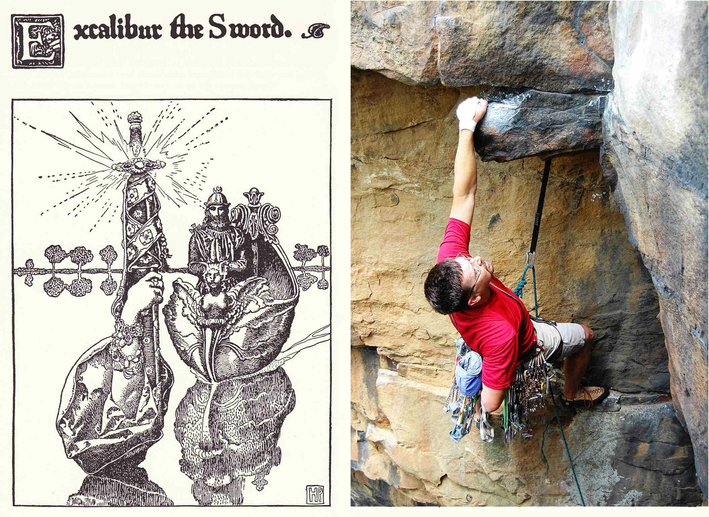
The Story of King Arthur and his Knights by Howard Pyle (1902): https://fr.wikipedia.org/wiki/Excalibur#/media/Fichier:Excalibur_the_Sword,_Howard_Pyle_1902.jpg
Climber on Supercrack (grade 5.9+) at Beauty Mountain cliff in New River Gorge, West Virginia, USA. By Jarek Tuszyński: https://en.wikipedia.org/wiki/Traditional_climbing#/media/File:New_River_Gorge_-_Supercrack_-_1.jpg
41.34 The Lady of the Lake isn't offering the Sword, she is hanging on it just like a climber on a cliff (the anchor metaphor)
In the legend of Excalibur, the magical sword is supposed to be "emerging" from a lake and given by a Lady, the "Lady of the Lake", but this is not accurate: this is just a fairy tale, because we've just seen that the Sword in the Stone legends are actually about extreme anchoring capability.
In other words: the magical Sword in the Stone = Aaron's Rod = the Staff of Moses = an Anchor
What I mean to say is that the Lady of the Lake isn't giving the magical Sword: she is grapping the sword and she is hanging on it, just like the climber hanging on the cliff on the above image.
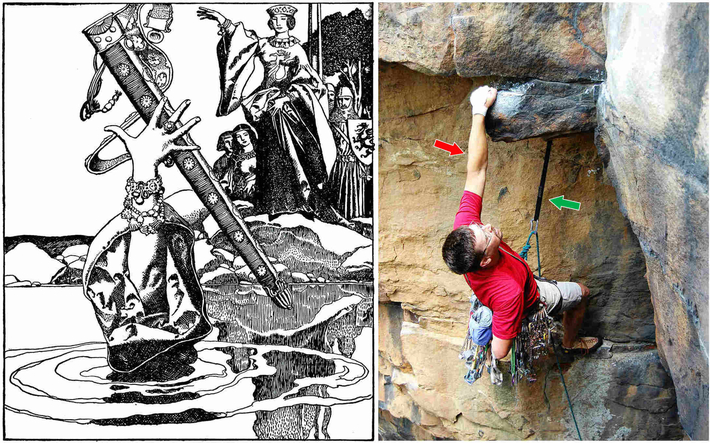
"Queen Morgana Loses Excalibur His Sheath." Howard Pyle's illustration for The Story of King Arthur and His Knights (1903): https://en.wikipedia.org/wiki/Excalibur#/media/File:Arthur-Pyle_Queen_Morgana_loses_Excalibur_His_Sheath.JPG
41.35 The stretched arm is about the stretched rope
What is fantastic with the climbing metaphor, is that on this very above image of the climber, you have both the metaphor of the grabbing arm that you have in the Excalibur pictures, and the real true meaning of the grabbing arm metaphor itself: the rope.
The stretched arm is about the stretched rope that is anchoring the (unseen) floating impactor to the platform of the Gallery.
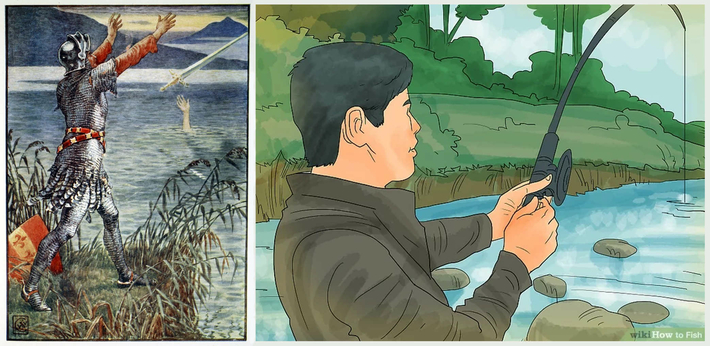
Sir Bedivere throwing Excalibur into the lake. Illustration by Walter Crane (1845): https://en.wikipedia.org/wiki/Bedivere
How to Fish: https://www.wikihow.com/Fish
41.36 The anchoring metaphor illustrated by Sir Bedivere: the throwing of the Sword into the Lake is about "the release of the anchor" hence the release of the Isis/Hatmehit hauling rope towards the waters of the well
The deciphering of the Sword in the Stone thing is very complex, and I really hope I'm doing a good job trying to explain it. What's for sure, is that when you read or when you hear historians talking about "magic", what you should understand is "metaphoric".
There is no magic in anything coming from the ancient Ages, and if we are not able to understand them, I think we should say so and stop invoking magic every two sentences or so.
We've already seen that ancient Egyptians have used the fishing metaphor about Hatmehit, the hauling rope of the impactor, slowly descending the central wooden caisson so that they both could be reattached with one another.
So, I'm gonna use that same fishing metaphor to explain the above image of Excalibur being thrown into the waters of the lake.
In both above images, there is something that is not shown but which is the key element of the picture:
• that is the unseen fish that is at the other end of the fishing rod
• and that is the impactor that is more or less floating into the lake
In other words, the hand we see ready to catch Excalibur, that is the (metaphorical) hand of the impactor, ready to get anchored back to the platform of the Grand Gallery. In other words, when Bedivere is throwing the Sword, he is throwing Aaron's Rod, he is throwing the Staff of Moses, and he is throwing the anchoring to the floating impactor.
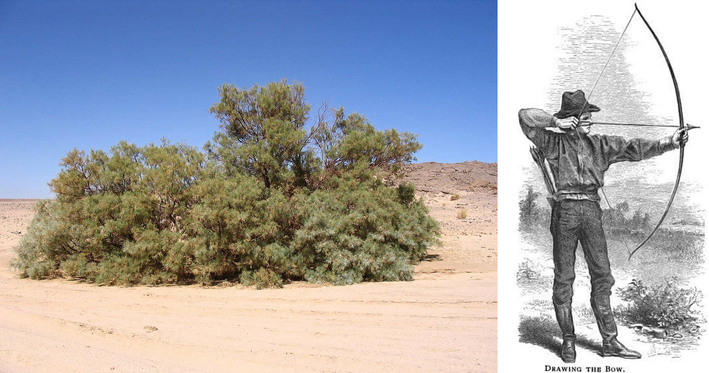
A Tamarix aphylla specimen in its natural habitat in Algeria, by Anthere: https://en.wikipedia.org/wiki/Tamarix#/media/File:Tamaris3.jpg
Drawing a bow, from a 1908 archery manual, by Maurice Thompson: https://en.wikipedia.org/wiki/Bow_and_arrow#/media/File:19th_century_knowledge_archery_drawing_the_bow.jpg
41.37 The Grand Gallery's windlass "pillar of a king's palace" was most probably made of super tension resistant Tamarix wood
The following excerpt is extraordinary, because it associates the death of Osiris (the moment when Osiris, as the Osiris stone of the impactor, is getting into the darkness of the inclined well, hence in some ways dies), with a Tamarix tree and a pillar made of Tamarix wood.
In the myth, Osiris (the stone block of the impactor) is put inside a wooden coffin (the wooden part of the impactor), thrown into the waters of the Nile (the waters of the inclined well), and ends up "embedded" into a Tamarix tree.
"Later myths tell a story in which the evil god Set killed Osiris, put him in a coffin which he threw into the Nile. The coffin became embedded in the base of a tamarisk tree of life, which became a pillar in a king’s palace." https://www.landofpyramids.org/tree-of-life.htm
There are here two things:
• When dead Osiris, in his wooden coffin is described as "embedded" in the "base of a Tamarisk tree of life", we have to imagine this tree in the Grand Gallery, with its roots in the waters of the well, and its top on the platform of the Gallery: Osiris would have looked like "embedded" into this tree.
This myth is only talking about the moment when the wooden and stone composite impactor is more or less floating into the waters of the well, and is ready to get hauled back up again to the top of the Gallery, because of the platform's windlass drive shaft. The "pillar" of the myth is the windlass.
• But the most important information is of course the fact that the "pillar" is made of Tamarisk wood.
We've already seen that the impactor was certainly made of Sycamore (also Sycomore) Ficus sycomorus tree (the Sycamore tree putting its weight upon the Great Serpent Apep), probably the most hit and weather resistant of all wood species. Could the windlass of the platform of the Grand Gallery really have been made of Tamarix wood?
According to Wikipedia, Tamarix (also Tamarisk) wood was used in ancient times to make 'tremendous powerful bows': it means that Tamarisk wood is super resistant to tension, whether that tension is coming from the string of a Saka bow, or from the central hauling rope of the impactor.
"The Tamarix wood was used by the Saka (combined with wood and ibex horn) to produce tremendously powerful bows hundreds of years before the common era." https://en.wikipedia.org/wiki/Tamarix
41.38 The bending capability of the windlass drive shaft "pillar in king's palace"
This bow metaphor is really interesting, because the first characteristic of a bow is its ability to bend, and we've already seen in Section 21, that ancient Egyptians had deified this same drive shaft into the god Aker, a god who was known as "the (one) who bends".
Of course, it is conceivable to imagine that the drive shaft would have indeed been exposed to massive tensions and would have bent a lot.
"The name Aker means '(one) who bends'". https://ancientegyptonline.co.uk/aker/
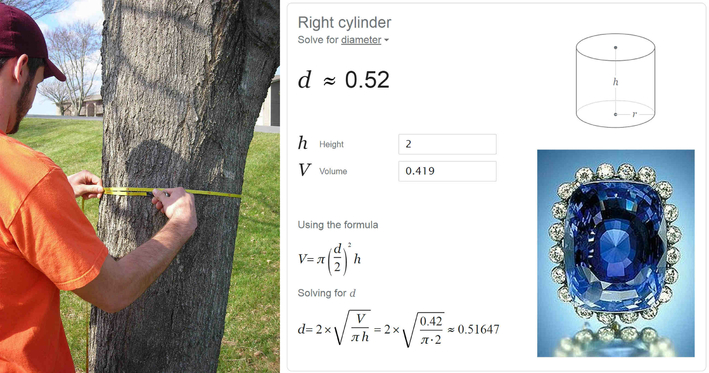
Measurement of tree diameter at breast height [here, through its circumference], making sure that the tape is perfectly level and that the tape is not kinked, so as not to skew the reading of the diameter. Photograph by VTmaddogVT: https://en.wikipedia.org/wiki/Diameter_at_breast_height#/media/File:Using_a_DTApe.JPG
Logan sapphire with diamonds, National Museum of Natural History, Washington DC, by Chip Clark, Smithsonian staff: https://en.wikipedia.org/wiki/Sapphire#/media/File:Logan_Sapphire_SI.jpg
41.39 The "sapphire-blue color" of Aaron's rod is most probably about the blue-green color of Tamarix leaves
"Rabbinic midrash described attributes of Aaron's rod beyond those in the Biblical text. It is reported that the rod was made of sapphire, weighed forty seahs (a seah = 10.70 pounds), and bore the inscription דצ״ך עד״ש באח״ב (the initials of the Hebrew names of the Ten Plagues)
"Tamarix aphylla. Ornamental: Quite an attractive ornamental tree. The thin branches and blue-green leaves give a feather-like appearance and drooping clusters of delicately coloured inflorescence are attractive, used to screen farm buildings and for street planting."
https://apps.worldagroforestry.org/treedb2/speciesprofile.php?Spid=1590
41.40 The diameter of the windlass was about 52 centimeters
It will be probably hazardous to come with an exact length for the drive shaft, but considering the 2.10 meters width of the Grand Gallery, we can imagine that length to be close to 2 meters.
For a right cylinder of 293 kilograms, with 2 meters in length and a density of about 700 kg/m³, (that is 293/700 = 0.41857 m³), then the diameter would be about 52 centimeters.
"Tamarix aphylla is a fast growing, moderate sized evergreen tree, up to 18 m high with erect tapering trunk, 60-80 cm dbh [Diameter at breast height, or DBH, is a standard method of expressing the diameter of the trunk or bole of a standing tree]."
"Fibre: The wood chips easily with little dust being produced. Chips are of good quality and colour, suitable for manufacture of particleboard. Twigs are used for basket making.
Timber: Wood, close-grained, light-coloured, fibrous, fairly hard, heavy (specific gravity 0.6-0.7.5) strong, density of about 700 kg/m³, high shock resistance, splits readily when first cut and polishes well. Useful for making ploughs, wheels, carts, construction, tool handles, brush-backs, ornaments, carpentry, furniture, turnery and fruit boxes."
https://apps.worldagroforestry.org/treedb2/speciesprofile.php?Spid=1590

The difference between a well and a cistern is in the source of the water: a cistern collects rainwater where a well draws from groundwater. Image by Tamar Hayardeni: https://en.wikipedia.org/wiki/Well
Self-Watering Planters: How to Use Them & How They Work at https://www.wikihow.com/Use-Self-Watering-Pots
41.41 The watering metaphor about the withered though sprouting Rod of Aaron
I first want to apologize for the poor use of vocabulary I've made about what I'm calling the "inclined well" since the beginning of the study, because it clearly was a mistake, as "well" is only associated with groundwater; I should have used the word "cistern" instead. But I guess it's just the way it is, for me it will always be the inclined well!
What's funny is that ancient Egyptians used hundreds or thousands of metaphors to describe their work, and I've just been doing the exact same thing all along. I love it!
Anyway, if the inclined well wasn't really technically a real well, but rather a cistern, the metaphor of the well is what have been used for the famous twelve rods that Moses gave to the twelve Israelite tribes.
"In the Ethiopian fourteenth-century text of the Kebra Nagast, Aaron's rod is broken in three and probably a symbol of the Trinity: "The rod of Aaron which sprouted after it had become withered though no one watered it with water, and one had broken it in two places, and it became three rods being [originally only] one rod." https://en.wikipedia.org/wiki/Aaron%27s_rod
In the last above excerpt, "The rod of Aaron which sprouted after it had become withered though no one watered it with water" is the key for the comprehension of "the twelve rods of Moses".
Scholars are wondering why did Aaron's Rod sprout without even being watered first; they are wondering why nobody had to water Aaron's Rod for it to sprout.
But what they didn't know is that Aaron's Rod only goal was to raise the impactor from the waters of the well, and by doing so it would have looked exactly like any other windlass designed to get water out of a well (or a cistern).
What scholars have missed, is that Aaron's Rod actually did get all the water it needed, all by itself.
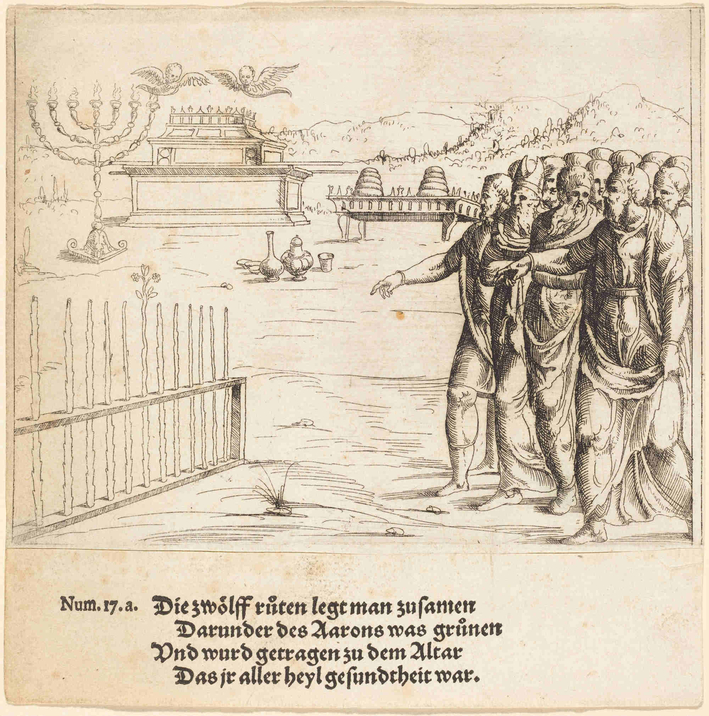
Aaron's rod blossoming, as in Numbers 17:23, etching by Augustin Hirschvogel (1503 - 1553); in the National Gallery of Art, Washington, D.C.: https://www.nga.gov/collection/art-object-page.39346.html
41.42 The mystery of Moses "splitting a tree trunk into twelve rods"
"According to one midrash, Moses split a tree trunk into twelve portions, and gave one portion to each tribe. When the Rod of Aaron produced blossoms, the Israelites could not but acknowledge the significance of the token." https://en.wikipedia.org/wiki/Aaron%27s_rod

Calculation of motor rpm , hp , wattage , current. Video from Smart Electrical: https://www.youtube.com/watch?v=sl65aBevh1M
41.43 The twelve revolutions per cycle hypothesis (rpc versus rpm)
Now comes the question of why are mentioned twelve rods, twelve tribes, and the fact that only Aaron's Rod did sprout.
I first have to confess that the following explanation is only a simple hypothesis, nothing more as many interpretations of the twelve rods will most probably flourish over the years.
My idea is that when Moses "split a tree trunk into twelve portions", it is not about really splitting a tree trunk at all, at least not in a conventional way.
We've already seen that the Staff had been "cut" in two places, resulting into three pieces, i.e. three rods; but here there is no mention of anybody actually cutting a trunk. In my opinion, "splitting" has to be taken metaphorically, again.
What we shouldn't forget is that the nature of the windlass drive shaft is to rotate in the first place, and if the texts are giving us his weight (293 kg), why wouldn't they give us his rotating speed as well?
Of course, I'm not talking about revolutions per minute (rpm), but I'm wondering if the twelve rods wouldn't be about twelve revolutions per cycle (it probably doesn't exist, but it could be a rpc unit).
If I'm making this hypothesis, it is also because of the 25 pair of niches in the walls of the Grand Gallery, and the fact that I find less and less likely that all these 25 pairs of niches would have been used for the sequential hauling of the impactor; I don't imagine ancient Egyptians using an uneven number for such an important meaning; instead, they would have certainly loved to use 24 pairs. If they did, there would have been one pair of niches for let's say securing the impactor and/or the hauling Beetle once at the top of the Gallery.
This number 24, would then be perfect for some kind of rationalization of the entire process of the Grand Gallery's operation, and in particular in the operation of the windlass: the twelve rods could mean that the entire sequence of hauling would have needed twelve complete rotations of the windlass shaft; and with 24 pairs of niches (24 pairs of latch bolts dedicated to the sequential hauling process); it would mean that they would have needed to operate 2 pairs of latch bolts (that is 2 progression steps) to complete a full revolution of the windlass shaft.
Of course, it would have been only at the end of the hauling process, i.e. after twelve full revolutions of the windlass, that the impactor would get to the top of the Gallery, and able to "water Aaron's Rod", i.e. to get Aaron's Rod sprouting.
But again, this is only an hypothesis.
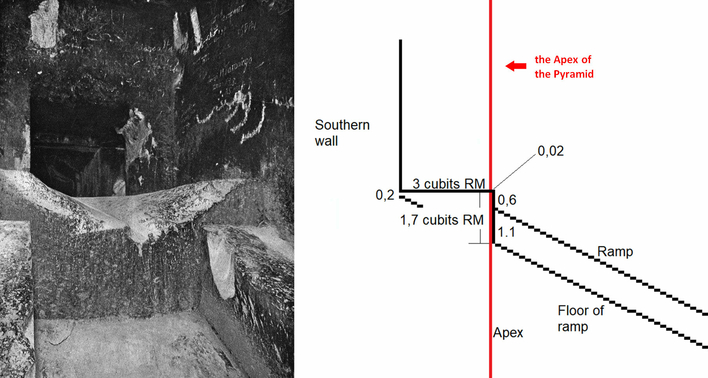
Draw of the "big step" in the Grand Gallery of the Great Pyramid of Giza, by Stefan A. H. Holmgren (The Khufu Pyramid): https://khufupyramid.dk/inside-dimensions/grand-gallery
41.44 The origin of Upper and Lower Egypt is in the huge block of the Grand Gallery's top platform
This part of the study gave me a lot of trouble, because even if I've suspected that the terms Upper Egypt and Lower Egypt were about the Great Pyramid for a very long time, I got also wrong about the fine understanding of the whole thing.
I first thought that these terms referred to the fact that the Pyramid, while in operation for cold production, wasn't finished (the elevation stopped at the level of the Gatenbrink’s Doors, forming a flat roof just like it is in every mastaba); and I thought that the Upper and Upper thing was really literally about a vertical separation (read Section 31 about the operating flat roof of the Great Pyramid).
Then I realized that it was not the flat roof, but the top platform of the Grand Gallery where was located the separation, but I still thought of a vertical separation: I didn't see it was just another metaphor, so to speak.
I only understood the trick when I was reading the blog on the Great Pyramid, written by Stefan A. H. Holmgren and when I stumbled on its remark about the northern edge of the top platform:
"It is impressive how close the Northern edge of the top stone is on the Apex - the middle of the pyramid. The distance is 0,02 cubits RM is equal to 1 cm !"
"I assume it was the intention to place the edge of the top stone in the middle of the pyramid. The idea might have been to mark a point between the ascending structure and the entrance of the passageway to the antechamber and the "Kings" chamber, which hereafter is horizontal." https://khufupyramid.dk/inside-dimensions/grand-gallery
And it is impressive indeed: the northern edge of the massive block that is the top platform of the Gallery is only one centimeter away from the exact vertical plan which separates the Pyramid in two identical parts (not the internal layout, just the external pyramidal structure of course).
It means that this is the northern edge of this block which is the "big separator" within the Pyramid, and that the separation occurs in a horizontal plan, not a vertical one.
The block is separating the southern part of the Pyramid from the northern part, but to understand why it has been associated with Upper Pyramid (and Upper Egypt) and Lower Pyramid (Lower Egypt), you have to look at it from the impactor's point of view: when the impactor was moving towards south, it was going up; and when the impactor was moving north, it was going down the Gallery.
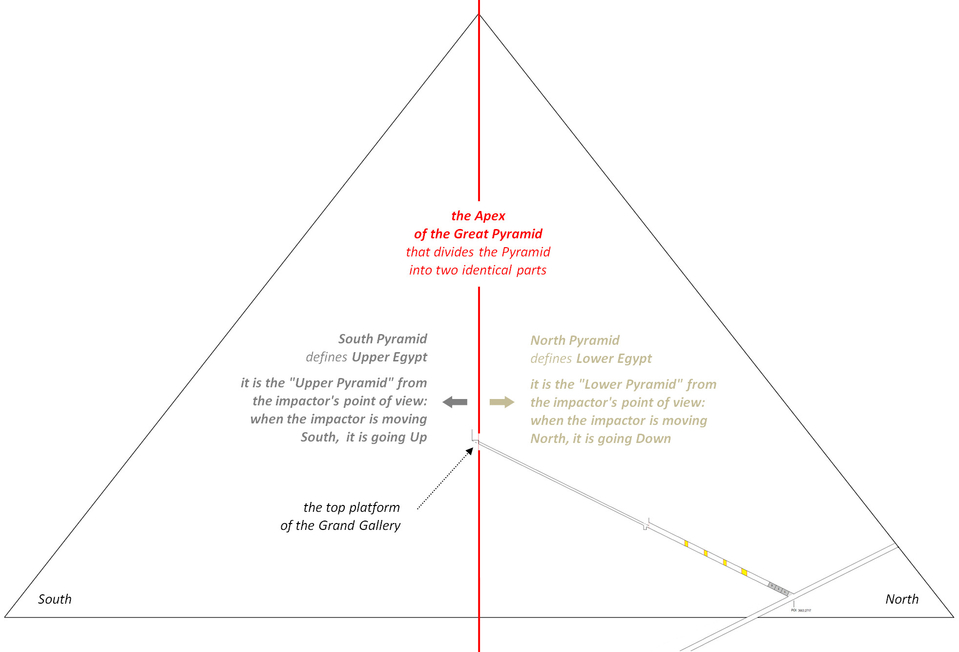
Draw of the Great Pyramid of Giza, by Stefan A. H. Holmgren (The Khufu Pyramid): https://khufupyramid.dk/inside-dimensions/grand-gallery
41.45 Upper and Lower Egypt and the metaphor of the waters of the Nile
We've also already seen that this pairing of the internal layout of the Pyramid with the entire country of Egypt, was most probably suggesting that the water used to power up the Pyramid could have either be rain water or water from the Nile.
This is not because of Hapi, the Nile god that the water really was water from the Nile: any kind of water, circulating in the internal layout of the Pyramid, would have looked just like the Nile circulating within the whole country.
Whether rain water or water from the Nile was used is yet to find out, and maybe both were used (I'm only saying that because of the biosand filter, which needed to be "nourished" with a certain quality of water, with just enough dirt so that the microorganisms could live, but not too much to plug the filter; they have to find the perfect balance for the filter to be efficient).
The Pyramids of the Cold version 2 (May 2023 - March 2024)
Summary of the study and Table of Contents
Part A: The evaporative cooling process
Section 1 • The horizontal evaporative cooling passage layout
Section 2 • The Dendera Light and the creation of the fog of microdroplets by the fog nozzle
Section 3 • The water cycle glorifying metaphors: Geb, Shu, Nut, Tefnut
Section 4 • The theorization of the evaporative cooling process by Akhenaten and Nefertiti
Section 5 • The theorization of the evaporative cooling process in the Weighing of the Heart
Part B • The inclined well of the Great Pyramid of Giza
Section 6 • The inclined well layout and the girdle stones
Section 7 • The Taweret "Lady of the Well" temporary sealing granite plug of the well
Section 8 • The Bes temporary wedging block immobilizing Taweret
Section 9 • The draining of the well
Section 10 • The Great Serpent Apep and the snake water metaphors
Section 11 • The Was scepter and the control over "snakes"
Section 12 • The beating Heart of the Great Pyramid
Part C • The composite impactor of the Great Pyramid (Horus, Ra, Osiris, Medjed, Sobek...)
Section 13 • The wooden and stone composite design of the impactor: Ra and Osiris
Section 14 • The endlessly immersed Osiris stone and the seed metaphor
Section 15 • The Anubis sledge and the bobsled mask
Section 16 • The sledge runners of the impactor: Thoth
Section 17 • Medjed: the smiter nobody can ever see
Section 18 • The Apis bull and the ramming impactor's metaphors
Section 19 • The crocodile god Sobek impactor (more or less) floating in the waters of the well
Section 20 • The Obelisk and the Benben stone rising from water
Part D • The Grand Gallery's of the Great Pyramid of Giza
Section 21 • The Sacred "sloping paths" of the "oval-shaped cavern of the act of Hauling"
Section 22 • The central wooden caisson of the Gallery: Sekhmet and the Triad of Memphis
Section 23 • The hauling ropes of the Grand Gallery: Isis, Nephthys, Hatmehit, Wadjet and Nekhbet
Section 24 • The hauling Beetle and the Seven Scorpions of Isis
Section 25 • The Great Cow goddess Hathor and the operating cycle of the hauling Beetle
Section 26 • The 10 operating phases of the Grand Gallery
Section 27 • The guide to the Afterlife for the smart traveler and the canopic jars
Section 28 • The scarab amulet glorifications of the hauling Beetle
Part E • The very large and roughly finished sarcophagus of the Great Pyramid
Section 29 • The biosand filter sarcophagus of the Great Pyramid
Section 30 • The Elephantine Triad deification of the biosand filter of the Great Pyramid
Section 31 • The Great Pyramid's operating flat roof and the water supply issue
Part F • Chemical manufacturing and industrial cooling before the Great Pyramid
Section 32 • The Serdab and the "Refreshment of the Gods" Step Pyramid of Djoser
Section 33 • Sneferu's Red Pyramid and the accumulated ammonia
Section 34 • The Disc of Sabu and the Solvay process for pure natron manufacturing
Part G • The tremendous impact of the Great Pyramid on the whole ancient world
Section 35 • The hidden secrets of the Hermetica Emerald Tablet (around 1600 C.E.)
Section 36 • Thor and the magical Hammer in the Great Hall of Bilskirnir
Section 37 • The Churning of the waters of the Ocean of Milk (Hindu mythology)
Section 38 • The Tibetan prayer wheels and the Grand Gallery's operation
Section 39 and Conclusion • The cooling water of spitting Kebechet
Part H • Epilogue
Section 40 • The smiting Ark of the Covenant and the Ten Commandments
Section 41 • The 293 kilograms windlass Staff of Moses and Aaron... and the First Plague of Egypt: water turning into blood
Section 42 • Ezekiel's Four Egyptian pulley "Wheels within the Wheels" and the four angel ropes
Section 43 • David, Saul, two giant Goliaths, five little stones, an aeolian harp... and a weaver's beam
Section 44 • The holy water fonts and the biosand filter
Part I • The magicians of the Great Pyramid of Giza
Section 45 • The Legend of Khufu and the "magician" polymath Imhotep
Section 46 • The two magical eyes of Isis and the brilliant but painful flame of her twin sister's braids
Poster un commentaire
